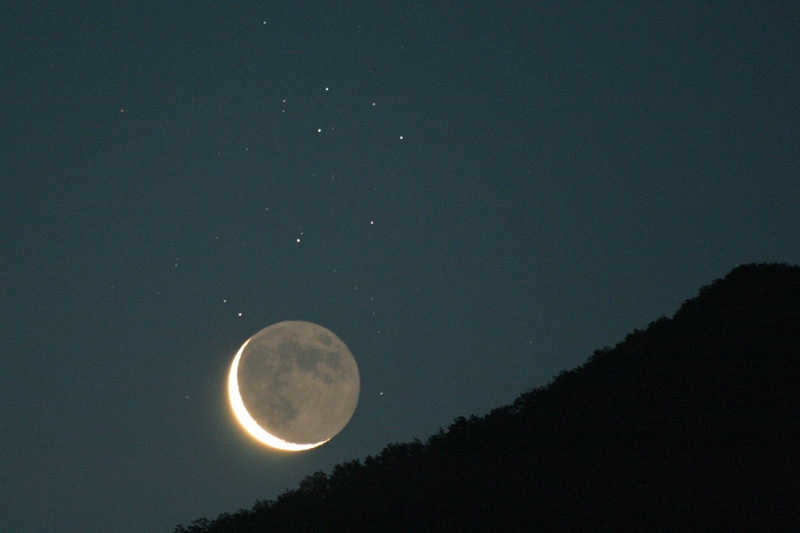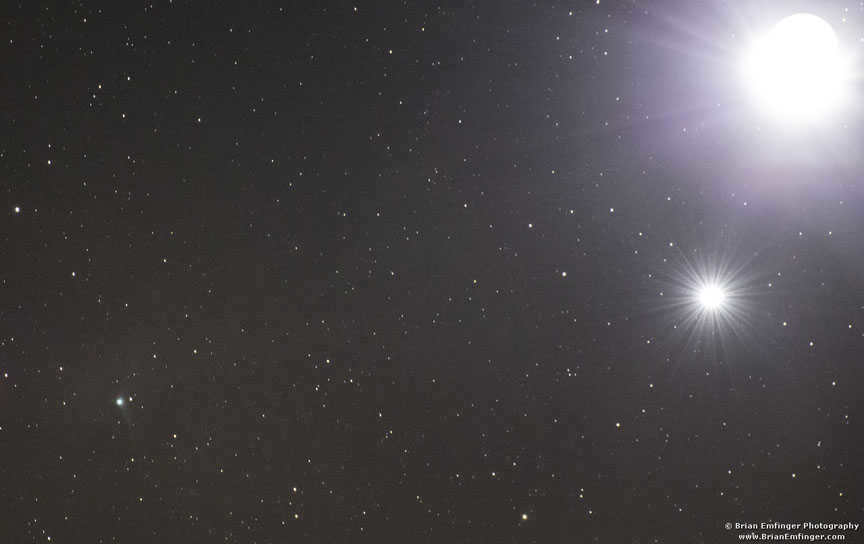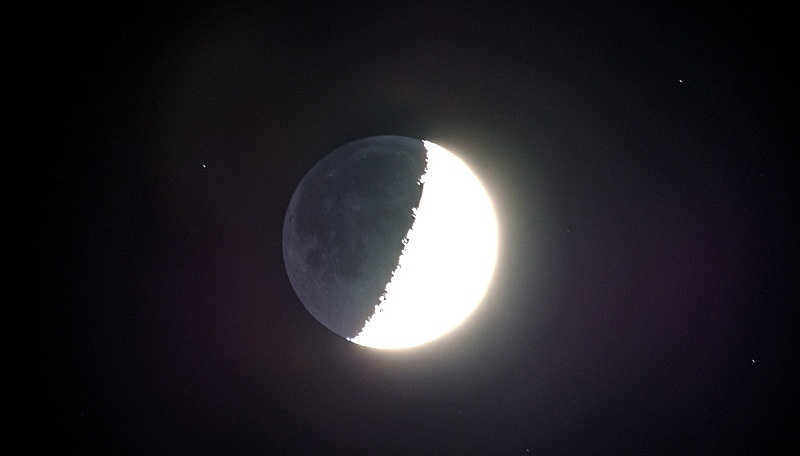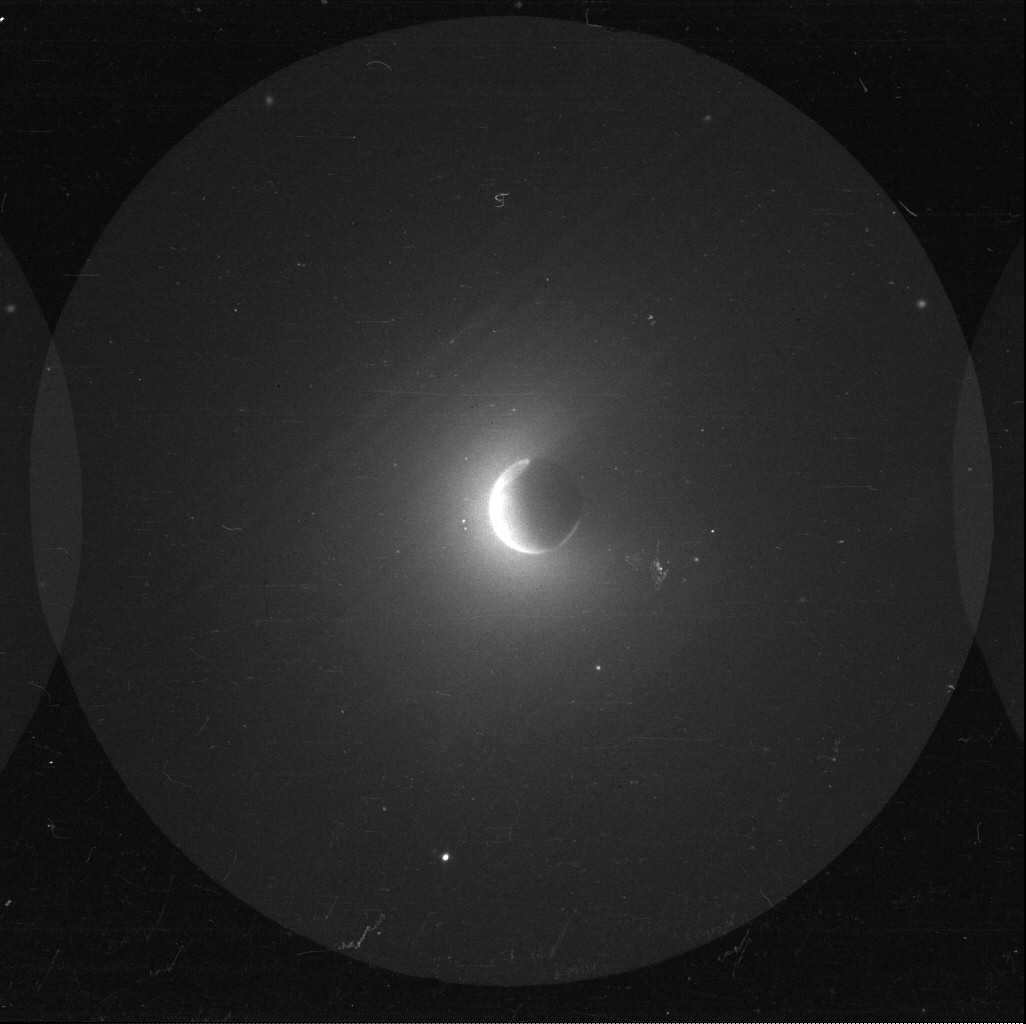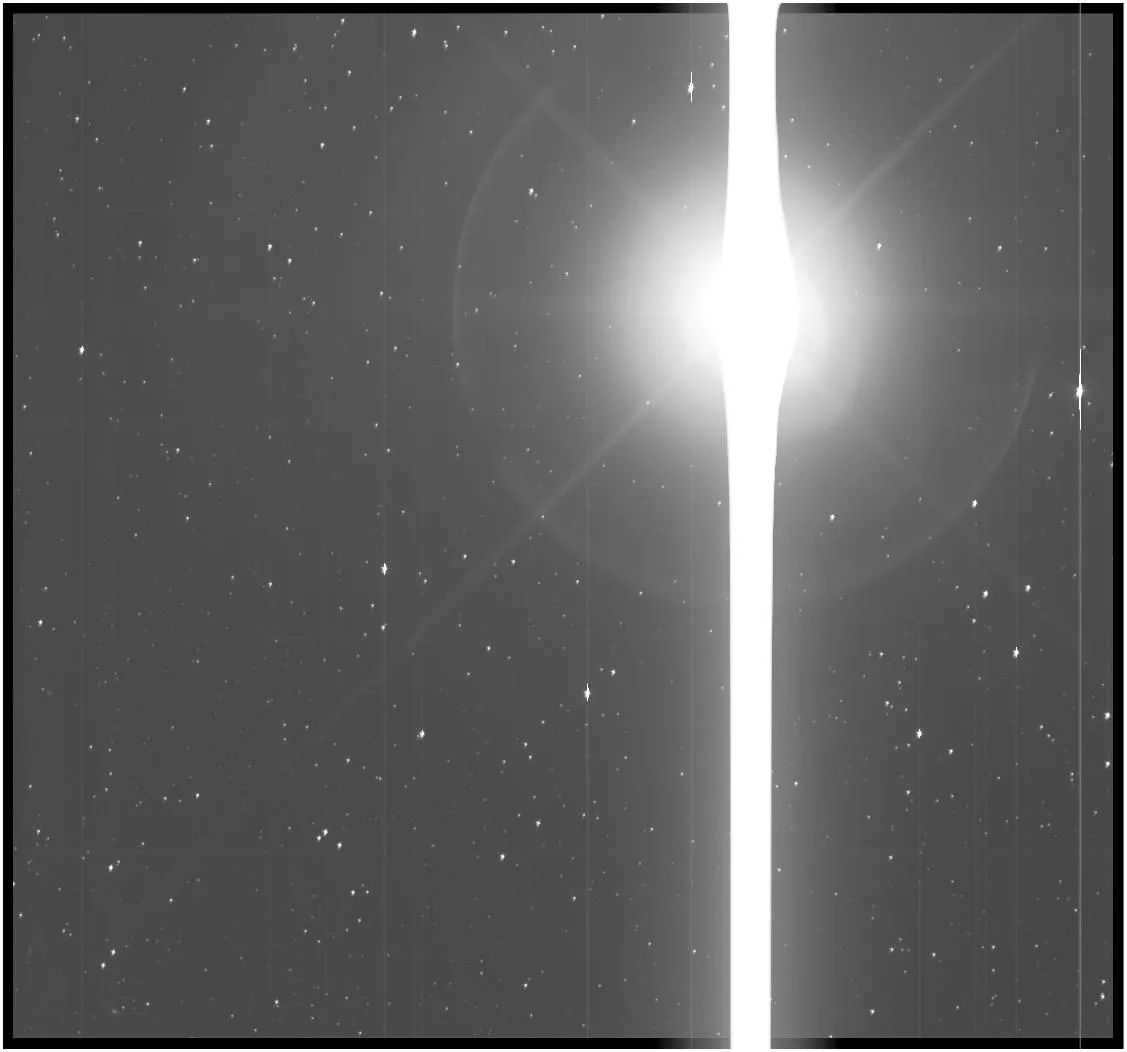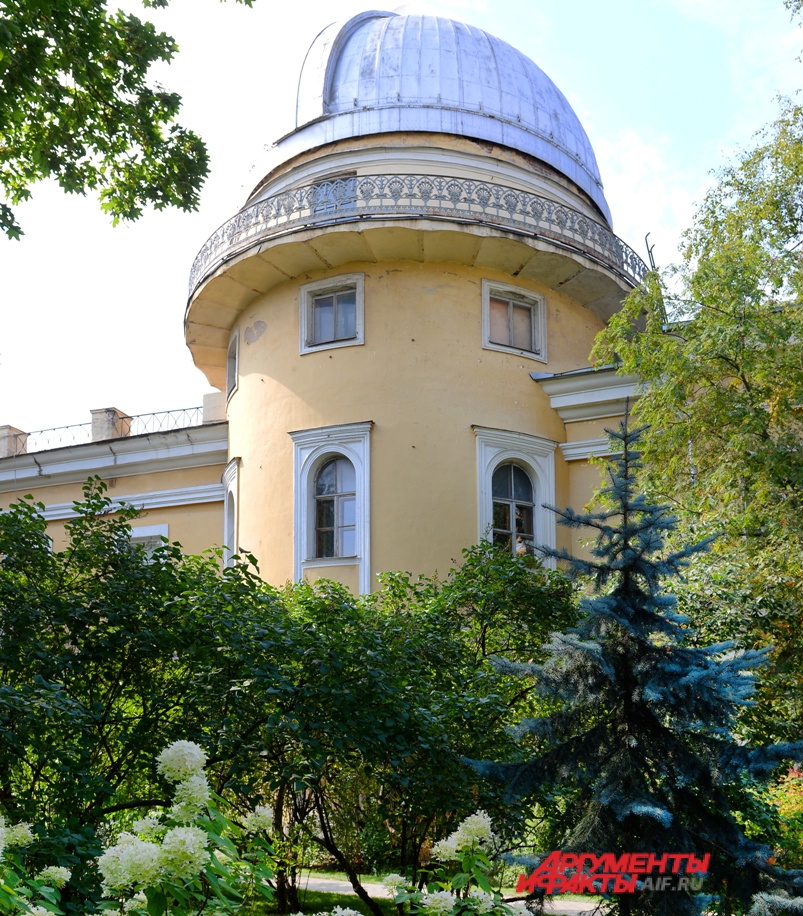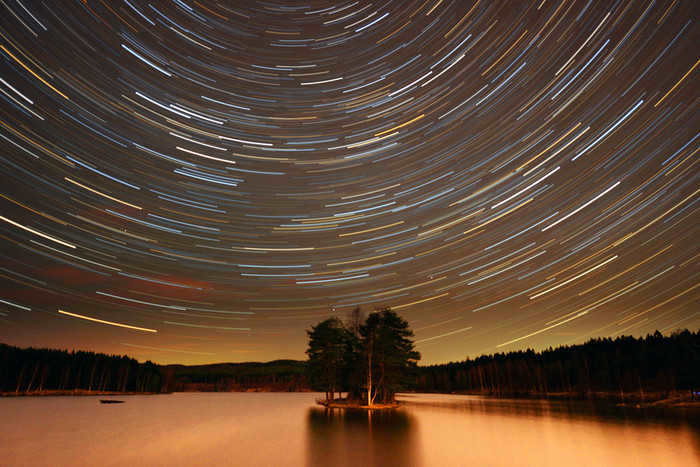
This week, the skies offer a spectacular sight – the Perseids meteor shower, the brightest astronomical event of the year. The night of August 12-13 is the best time to witness the frequent occurrence of shooting stars. “Gazeta.Ru” has discovered the top spots in Moscow for stargazing.
This year, the conditions for observing the Perseids meteor shower, caused by the Earth passing through a trail of dust particles from the Swift-Tuttle comet, are exceptionally favorable. Meteorologists predict clear skies during the peak of the shower, and the absence of a full moon will enhance the visual impact of this magnificent display.
During the “peak night,” skywatchers can make up to 60 wishes per hour, as that’s the number of shooting stars expected to grace the sky from August 12 to 13.
Observing Meteor Showers in Moscow’s Residential Areas
Witnessing a meteor shower in Moscow is a breathtaking experience that doesn’t require any special equipment. These celestial events can be easily seen with the naked eye. However, the key to enjoying the show is to carefully select the observation spot. In the city center, the bright lights from advertisements and buildings make it challenging to spot meteors. To increase your chances, head to the quieter residential areas, where the light pollution is minimal. Dormitory districts are particularly suitable for observing fainter meteors that are farther away from the city lights.
The requirements for an ideal observation location are simple: the darker, the better. Ensure that there are no obstructions such as trees or buildings that could hinder your view of the sky. It’s also crucial to have a clear line of sight to the radiant Perseids, which is a point in the Perseus constellation from where the meteors appear to originate. Potential spots for observation include flat rooftops, spacious yards, open clearings in parks, or small hills.
If you happen to possess your own telescope or have a friend who does, you have the opportunity to engage in “sidewalk astronomy” right in the heart of the city. One option is to attend free gatherings organized by astronomical optics stores or the city’s major observatories.
When stargazing in the city, it is possible to observe either the celestial bodies closest to Earth or the ones that emit the most light. It is particularly fascinating to observe the Moon and examine its craters and seas. Venus is usually quite visible, and if you are lucky enough to catch Mars during its period of visibility, you may even spot Saturn. Furthermore, many stargazers are amazed to discover that Jupiter features a massive red spot.
There are fascinating stars: when observed with the naked eye, we see one, but through a telescope, we can see two stars that are located in close proximity to each other. Interestingly, these stars can sometimes have different colors, with one being yellow and the other being blue,” explained Julia Kim, a spokesperson for the Moscow Planetarium, to “Gazeta.Ru”.
However, if you wish to witness the meteors in all their splendor, it is advisable to venture outside of the city, perhaps to the countryside. Alternatively, if you are looking to join a group of like-minded individuals, you can reach out to the Moscow Astronomical Club, as they regularly organize trips to various locations, such as a designated site near Zvenigorod.
Sokolniki Park
can be paraphrased as “Park Sokolniki” or “the park located in Sokolniki”.
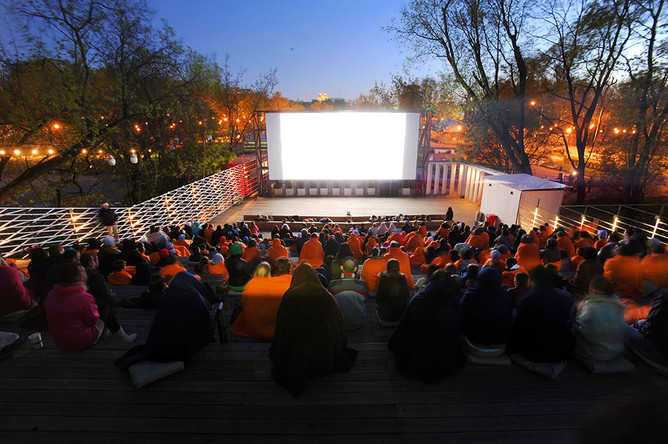
As May arrives, summer cinemas open up in the parks of Moscow. They will be showcasing movies during the evenings.
If you do not possess your own optical equipment, you have the option to utilize the city’s equipment, which is significantly more powerful. There are regular observations conducted in two “public” observatories in the city – in Gorky and Sokolniki parks. While it may be challenging to observe the Perseids due to light “pollution,” you can still catch a glimpse of other celestial bodies on most evenings with favorable weather.
The observatory in Sokolniki operates throughout the year. It houses two telescopes – one for nighttime observations and another for observing the Sun. The first telescope provides the opportunity
The price for one session is 170 rubles, while privileged categories can enjoy a discounted rate of 65 rubles on the first Thursday of each month.
The “Solar” telescope offers the opportunity to observe prominences and spots on the star. These sessions are available from Thursday to Sunday, provided that the sky is clear. The cost for these sessions is 65 rubles. In case of unfavorable weather conditions, visitors can explore the constellations at the local planetarium, where the image is projected onto the dome.
Gorky Park
The installation of the first astronomical pavilion in Gorky Park dates back to 1929, and the observatory was established in the mid-1950s. It was known as the “People’s” observatory because it was open to everyone. However, due to its deteriorated state, it remained closed for over 20 years until it was reopened in 2012 after undergoing reconstruction.
The observatory in Gorky Park is open daily, but only during the warm season until the end of September. It features a 360-degree sliding dome that completes a full revolution in just a minute and a half.
Although the view may be somewhat obstructed by the surrounding trees, visitors can still observe solar flares and sunspots during the day, as well as the bright planet Venus and Jupiter with its satellites at night, all through the telescope.
Astronomical Institute of Moscow State University
If you missed the Perseids meteor shower, there’s no need to feel disappointed. The end of August marks the beginning of the most opportune season for stargazing and planet observation. The weather is typically warm, clear, and it gets dark early enough, making it convenient for both visitors and the observatory staff.
Moscow has been participating in the international popularization program “100 Hours of Astronomy” for several years in a row. This program usually starts in the middle of September and lasts for about a month. The State Astronomical Institute named after P.K. Gubkin, Sternberg Moscow State University, and the Moscow Planetarium are traditionally regarded as the main sites for this event.

The reason why stars are not visible in Moscow is because the MSU Observatory was constructed back when the university was situated on the outskirts of the city. At that time, the light emitted from car headlights and streetlights was not a hindrance to the observations conducted by the scientists. However, as the city has expanded and developed, the observatory now finds itself surrounded by urban infrastructure. Despite this, it is still possible to easily observe the brightest celestial objects such as the Moon, Venus, and large stars. These observations are made using two fixed telescopes from the Institute and three or four portable telescopes belonging to the Moscow Astronomical Club.
Evening observations are scheduled to take place from September 19 to 30, excluding Sundays, starting at 19:00. Admission is free. The institute offers captivating lectures on astronomy both inside and outside the premises, where attendees have the opportunity to have all their space-related questions answered, no matter how peculiar they may be. Additionally, tea is served to the guests, although it is recommended to bring your own food.
While the event is undoubtedly romantic and perfect for an enchanting and informative date, the female employees of the institute kindly request that high-heeled shoes not be worn, as the observatory’s telescopes require ascending a spiral staircase.
The Moscow Planetarium
When planning your visit to the Moscow Planetarium, it is important to keep in mind that it attracts a much larger number of visitors compared to the Moscow State University Observatory. This means that there is often a long line at the observatory. In the past, due to the high number of visitors, the planetarium staff had to implement restrictions and not allow entry to those who arrived later than one hour after the start of observations.
The usual program at the planetarium starts at 9:00 PM, but the exact start time for this year has not yet been announced. Admission to the event, which is expected to begin on September 1st, is free.
Get the latest updates from Gazeta.Ru by subscribing to our News, Zen, and Telegram channels.
If you come across any errors, simply highlight the text and press Ctrl+Enter to report it.
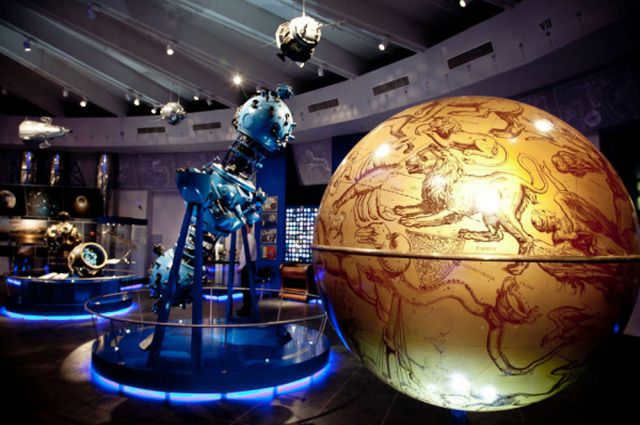
Are you aware of the steps required to witness them during a weather day? It is said that one must descend to the depths of the well! Furthermore, the image of the celestial heavens on an overcast day can truly astound when soaring above the uppermost boundary of the clouds. Those of us residing in the Northern Hemisphere can only marvel at one of the most exquisite constellations in existence, the Southern Cross, by relocating to the equator. However, it is feasible to simultaneously observe the sun and stars from a spacecraft. And, naturally, within a planetarium or observatory!
Which is the ideal location to carry out this activity? Moscow offers numerous spots where you can make your wishes upon a star.
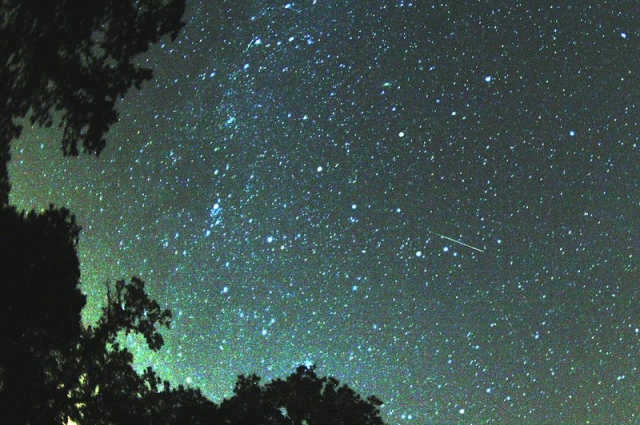
Hello to Mars!
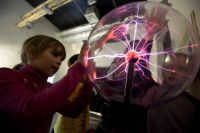
And most importantly, it’s hard to believe, but in the years before the war, our planetarium was actually a theater. It hosted performances by famous figures like Galileo, Giordano Bruno, and Copernicus, with real actors bringing their stories to life. Additionally, it also served as the birthplace of the first Soviet test rocket!
However, today the planetarium, which has been reopened after years of restoration, is just as impressive. It offers a wide range of attractions, including the Urania Museum and the interactive “Lunarium”. The Sky Park features observatory towers where visitors can explore astronomical instruments and tools in the open air. There’s also a 4D cinema, an exhibition of meteorites, and relief globes showcasing the Earth, Moon, Mars, Venus, and more. But the highlight is undoubtedly the Big Star Hall, which boasts a dome-screen with a diameter of 25 meters and an area of 1000 meters. It’s the most impressive of its kind in Europe! To make the most of your visit and see everything in one day, be sure to arrive early in the morning.
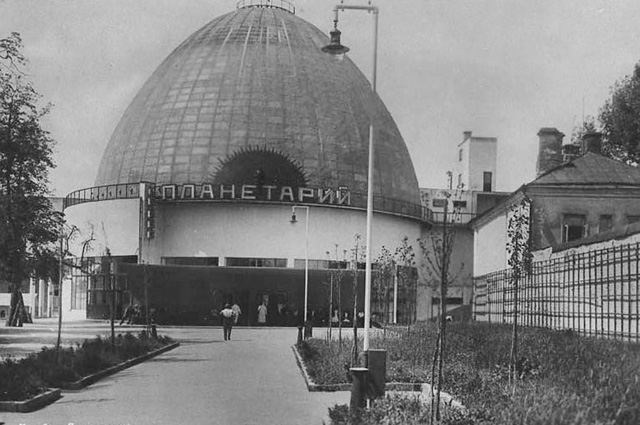
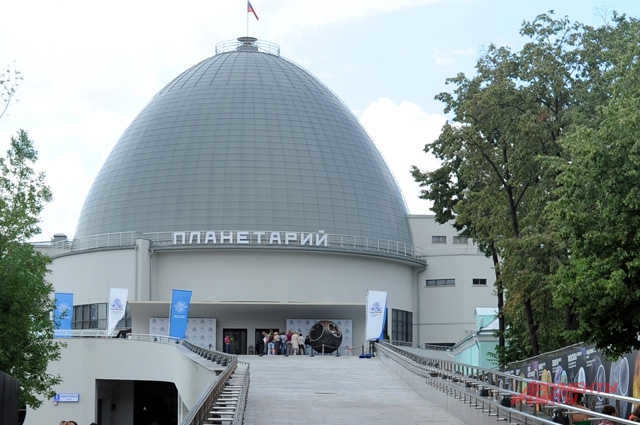
A Pair of Bears

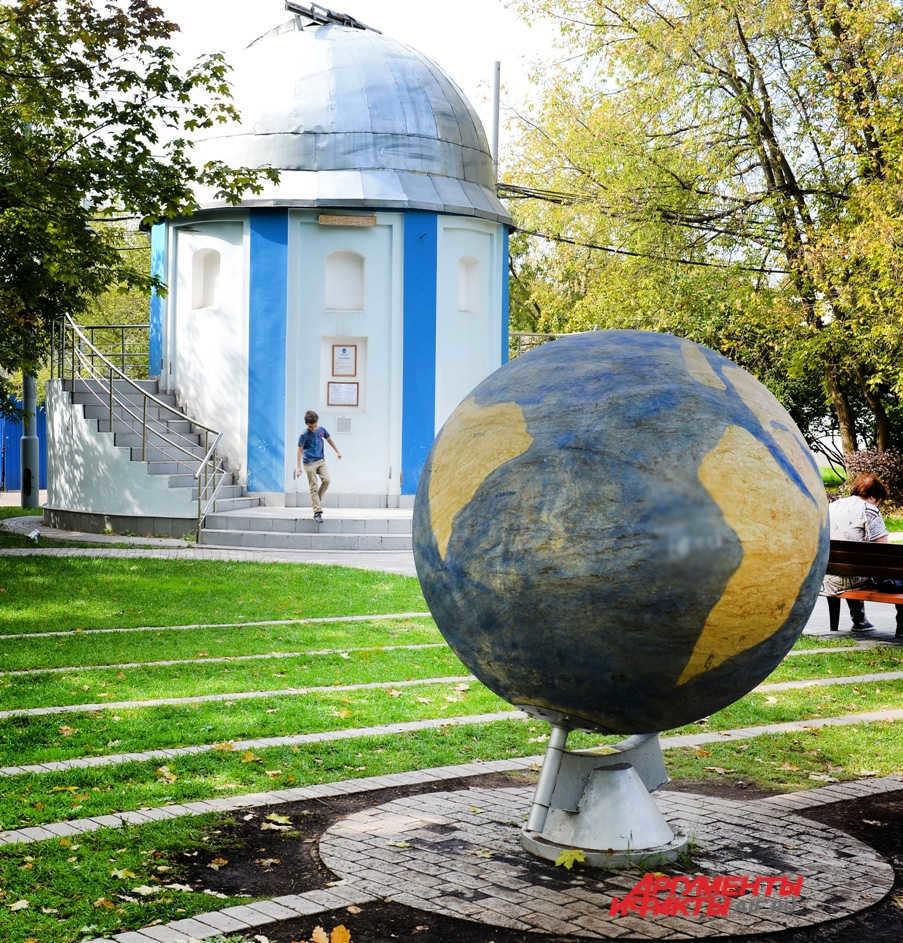
It would be great to have fewer generals!
However, Moscow has plenty of observatories that can fulfill the desire to “show my beloved that star over there”. One example is the small and cozy Museum-Observatory of the Moscow State University, renowned for its significant discoveries. Located near the 5th metro station, this observatory is where scientists first discovered the existence of “silver clouds”, investigated the Moscow gravity anomaly, and determined the temperature and magnitude of the Sun for the first time in history! To schedule a visit, simply call 8 (495) 939-20-46.
Alternatively, you can visit the planetarium located at the Cultural Center of the Armed Forces (Mendeleevskaya metro station, Suvorovskaya Pl., 2) ➎. In addition, Catherine Park is home to a magnificent mansion from the XVIII century, offering you the opportunity to immerse yourself in history while witnessing the eclipse. For the ladies, it’s worth mentioning that this is a prime spot to encounter charming military personnel, unless, of course, they are accompanied by their “generalesses”.

Famous street photographer Artem Zhitenev showcases his beloved city and provides insight into the most commonly searched questions on Yandex about Moscow and its locals.
Artem Zhitenev, a Moscow native in his fifties, has made a name for himself in the photography world. His remarkable work has been featured in renowned publications such as Newsweek, Russian Reporter, Ogonyok, National Geographic, and RIA Novosti. Zhitenev’s talent has also earned him a place in esteemed photo albums like Street Photography Now and The Best Of Russia 2011. In recent years, he has achieved recognition by making it to the finals of the Street Photography from Eastern Europe competition and the Miami Street Photography Festival. This summer, Zhitenev successfully crowdfunded his photo book titled “Moscow,” which showcases his finest captures from the past twelve years.
Today, we are privileged to share a selection of photographs from this remarkable book. Additionally, we have asked Zhitenev to provide answers to the most frequently asked questions on Yandex regarding Moscow and its inhabitants.
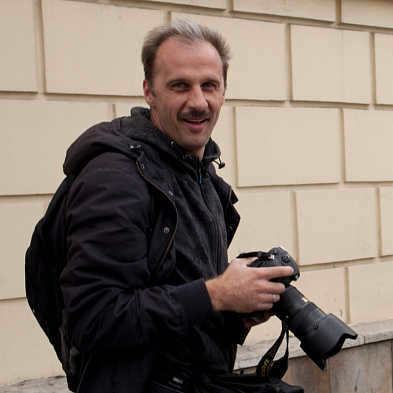
– Why isn’t Moscow a part of Russia?
– It’s not accurate to say that. The boundaries are not clearly defined. Moscow is expanding and extending into the surrounding region. Therefore, it is a part of Russia.
– However, what sets Moscow apart from other cities?
– Moscow is a city that never sleeps. If you visit Kirillov in the Vologda region, life comes to a halt there by 5pm. And for a photographer, that’s like facing death. Capturing photos in Moscow is incredibly effortless in comparison.
Another notable difference is the rapid pace of change. Many people reminisce about how Moscow used to be better, often saying, “but in 1985…”. However, it’s simply a matter of being different.
Living in Moscow has grown more intriguing and convenient. I used to reside in Rechnoi Vokzal, where it took me 15 minutes to reach the metro. Now, there’s a metro station in every nook and cranny. On the positive side, the parks are definitely worth mentioning. However, I won’t delve into Zaryadye….
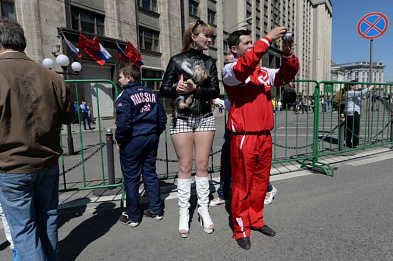
– What are some positive aspects of Moscow that you appreciate?
– I am particularly fond of a charming area located between Chistye Prudy and Kurskaya. Lyalin Lane and Pokrovka Street are lined with beautiful two-story houses. This is reminiscent of my childhood memories of Moscow. The essence and charm of the city are still preserved in this neighborhood.
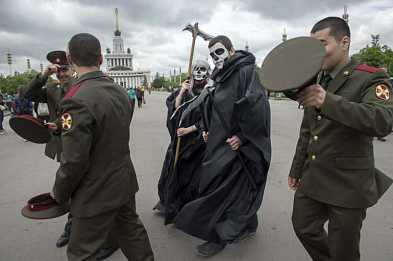
– What aspects of Moscow life do you wish to eliminate?
– Earlier, when a man approached us and asked for a cigarette, I refused. That is what I hope to change. When you accidentally left your bag at the café, I was worried that someone would steal it. Perhaps these thoughts stem from the large number of newcomers who have settled in this city.
– Muscovites are not the ones doing the hunting, at first they have everything. It is the newcomers who are in a rush to achieve something. Maybe in 25 years, these newcomers will have accomplished everything, settled down, and will no longer be taking over the city. The mortgage payment will be finished and everything will be great. (laughs).
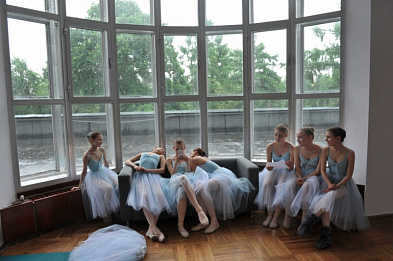
– What is the difference between a native Muscovite and a newcomer?
– You can tell by their way of speaking, obviously (laughs).
– Why do Muscovites have a dislike for newcomers?

– What is the reason behind the anger and arrogance of Muscovites?
– For the same reason. (laughs). It only appears that way. They are pleasant. They are simply putting on a show that after the initial beverage, everything will be alright. (laughs).
Generally, individuals are exhausted. You can sense it. I can observe it when I capture images – that they are exhausted. Not hostile, but cautious. Such an overall atmosphere. I began photographing Moscow nearly 12 years ago, and even back then this weariness was noticeable. As it was mentioned in Balabanov’s “Brother”: “The city is a malevolent force. The strong come, and they become weak.” Here, the force may not be malevolent, but certainly unkind. You can sense that people are not settled. They need to send money to their relatives. There are numerous Central Asians. There is no harmony in Moscow. But there was – for instance, in the 1980s. You could leisurely stroll from the center to the River Station and not have to worry about anything happening to you.
– That is, of course, the question (laughs). Moscow, being an expensive city, drains money quickly, leaving many people unable to save. They find themselves living from one paycheck to the next.
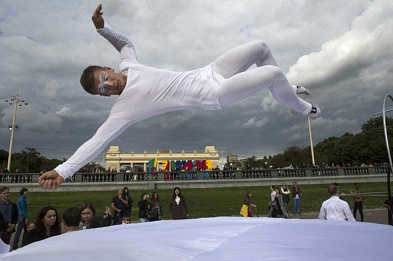
– Why are wages so high in Moscow?
– Well, the reason for the high wages in Moscow is the concentration of wealth. There is money available, but one must work hard to obtain it. This is the reason why Muscovites, as well as newcomers, become ambitious and competitive, as they need to survive in a place where competition is fierce. There is always someone who wants to take away a piece of what you have. Life and money are scarce in other regions, so many people come to Moscow in search of better financial opportunities.
– What is the reason for Muscovites moving to St. Petersburg?
– Perhaps they are seeking a different city atmosphere.
– What prompts Muscovites to leave Moscow?
– Well, many individuals choose to rent apartments and relocate abroad. In general, as the talented journalist Igor Naydenov expressed in an essay for my book: nobody leaves without reason. There must be specific circumstances. Some people may simply struggle to make ends meet. Renting an apartment alone costs at least 25 thousand. Let’s say you have a salary of 50. After paying rent, you have to manage your remaining funds for clothing and food. You have to work hard, search for additional sources of income.
Moscow welcomes everyone. However, as the saying goes, many are invited but few are chosen.

– What are the best places to explore in Moscow?
– I would recommend visiting the area near Lyalinoe Lane. This is where I often take my photography students for individual walks and photo shoots. For me, this is the essence of Moscow. It’s a quiet and peaceful place, unlike the busy streets of Lubyanka or Myasnitskaya. There are hidden courtyards and although many of them are locked now, unfortunately, it still has a unique charm. The best part is that it’s not crowded, which allows for a more enjoyable walk and photography experience.
– Is it safe to film in Moscow?
– When shooting in Moscow, it is important to be cautious. I personally have not experienced any serious threats. However, there was one incident that occurred outside of Moscow, in the Arkhangelsk region, specifically in the charming town of Velsk. My colleague and I were filming when a man emerged from his house, seemingly agitated. He was holding a kettlebell and began approaching me, clearly unhappy with our filming. If you search “Zhitenev and kettlebell” on Yandex, you can find the photo my colleague captured. (laughs). Fortunately, everything ended well and no one was injured.

– What are some good places to go with a girl in Moscow?
– Chistye Prudy is a great option. It has a lovely atmosphere in the evening with couples and men enjoying a glass of wine. But don’t worry, it’s not just rowdy men getting drunk (laughs). It’s actually a very pleasant place to spend time.
– Where is a good place to take a child for a walk in Moscow?
– Gorky Park is a fantastic choice. It’s a beautiful park that holds a special memory for me from the 1990s when it was used for VDV Day celebrations. It used to be filled with paratroopers, while the OMON police kept watch in the nearby woods. Nowadays, it’s a peaceful place with families and children enjoying their time in the park.
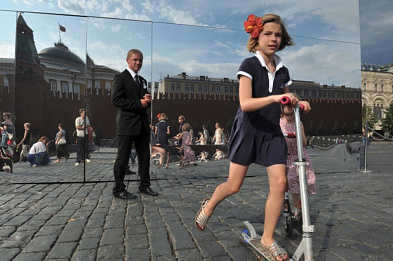
– Where can you find affordable dining options in Moscow?
– I’m not well-versed in this, I don’t frequent restaurants.
– What can be considered as traditional Moscow cuisine? Are there any dishes that are exclusively cooked by Moscow housewives?
– It’s a complex question. Everyone prepares a variety of dishes.
– What dishes were prepared for you in your childhood?
– I recall having dumplings, spaghetti, potatoes, and cutlets. I particularly enjoyed milk, especially the ones that came in pyramid-shaped containers. To access the milk, I had to either tear off the edge with my teeth or cut it with scissors. My grandmother used to send me to the bakery to get a scrumptious Moscow bun. Additionally, there were these candies called “Kholodok” – they were small, round, and resembled tablets. And the best ice cream, both in the past and present, can be found at GUM.
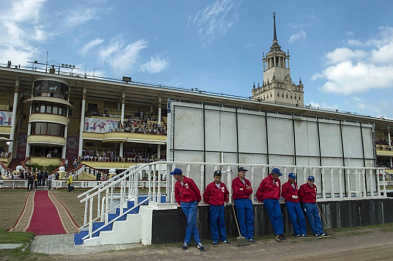
– Why is it impossible to observe stars in Moscow?
– The absence of stars in the Moscow sky can be attributed to the excessive artificial light and dense smog. However, when I retreat to my dacha, I am able to gaze up and rediscover the existence of the beautiful Milky Way!
– What is the most captivating location in Moscow during nighttime?
– Undoubtedly, Gorky Park or the city center. On City Day, the atmosphere in these areas is always vibrant and lively, continuing until the early hours of the morning. I find it particularly enchanting when the entire center is cordoned off and people spill out onto the streets. Festive occasions like these are a reminder of the importance of celebration in our lives.

– Why aren’t there any sparrows in Moscow?
– It’s quite a mystery! However, I recently witnessed a group of sparrows, some independent sparrows. (laughs). They truly vanished.
– What is the current fauna of Moscow? Who resides here?
– Pigeons! They are always throwing themselves under car wheels. Pigeons are everywhere. There are hardly any cats. It’s a shame, I am a cat lover, I adore cats.
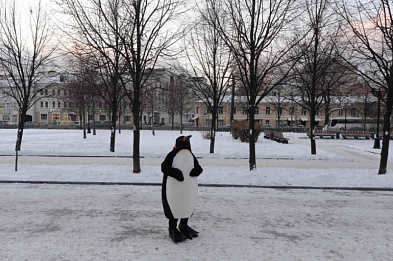

– How will Moscow be different in the years to come?
– At times, I find myself filled with dread when I consider what lies ahead. Take Presnya, for instance, where they recently erected three colossal towers – for reasons that remain unclear. It seems like a pointless investment in construction. I recently returned from Istanbul: they don’t tear down the old city there. It retains its unique aroma and atmosphere. Nobody even contemplates demolishing anything. Perhaps it’s because our mayor isn’t a native Muscovite. Let’s hope that the funds will eventually run dry and all of this will come to a halt (laughs).
The inquisitive young boy is fascinated by absolutely everything. He poses inquiries about every single thing he encounters. Why does the sun illuminate the day and the stars twinkle at night? And so on and so forth. Providing answers to seemingly straightforward questions can be challenging at times. This is because we may not always possess the necessary expertise. Furthermore, how does one explain something complex in a simple manner? Not everyone possesses this skill.
What is a star?
Understanding the nature of stars is crucial in explaining the phenomenon of the sun shining during the day and the stars illuminating the night sky. Young children often view stars as tiny specks in the sky, resembling small light bulbs or flashlights. To draw a parallel, stars can be likened to colossal spotlights. Their immense size and intense heat, combined with their vast distance from us, make them appear minuscule.
Firstly, it is important to note that the Sun is a unique entity, akin to a proper noun. It is specifically referred to as the closest star to our planet. However, one might wonder why it doesn’t appear as a mere dot, and what distinguishes its radiance during the day from the luminosity of the stars at night, given that they are essentially the same.
The reason why the Sun doesn’t present itself as a dot is due to its relatively close proximity compared to other stars, despite still being a considerable distance away. If we were to measure this distance in kilometers, it would amount to a staggering 150 million. To put this vastness into perspective, it would take a car traveling at a constant speed of 80 km/h without any breaks a staggering 200 years to cover such a distance. Consequently, this incredibly immense distance creates an optical illusion that makes the Sun appear small, even though in reality it is of such magnitude that it could easily accommodate a million planets similar to Earth.
Incidentally, the sun is far from being the largest and most luminous star in our sky. It is simply situated in the same location as our planet, while the others are scattered far away in outer space.
What causes the sun to be visible during the daytime?
Firstly, we must remember: when does the day begin? The answer is straightforward: when the sun starts to shine above the horizon. Without its radiance, this would be impossible. Therefore, in response to the question of why the sun shines during the daytime, we can assert that the day itself would not arrive if the sun did not ascend. As soon as it descends below the horizon, evening ensues, followed by nightfall. By the way, it is worth noting that it is not the luminary that moves, but rather the planet. The transition from day to night occurs because the Earth incessantly rotates around its fixed axis.
Why is it impossible to observe stars during the day, even though they emit light like the sun? The reason for this phenomenon lies in the presence of Earth’s atmosphere. The molecules in the air scatter and overpower the faint luminosity of the stars. However, once the sun sets, the scattering ceases, allowing the dim light of the stars to become visible.
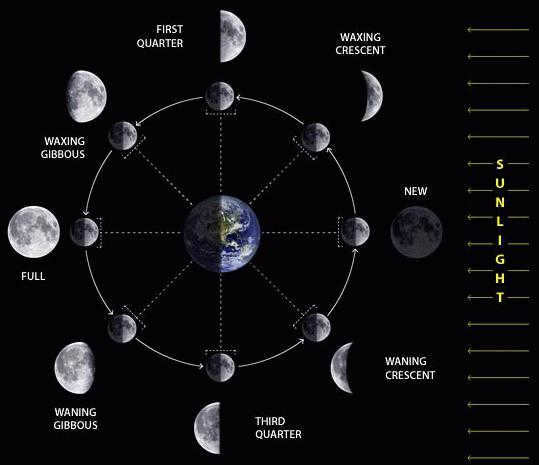
What causes the moon to be visible or not?
During the day, the sun shines brightly, illuminating the earth. However, at night, it is the stars that light up the sky. This phenomenon is due to the presence of the earth’s atmosphere. But have you ever wondered why the moon is sometimes visible and sometimes not? Moreover, when it is visible, it can appear in various shapes, ranging from a thin crescent to a full, bright circle. What factors influence its visibility?
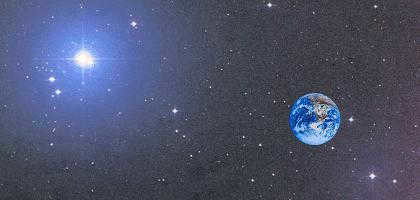
What can be observed in space?
When astronauts are in orbit, they are not preoccupied with the question of why the sun shines during the day and the stars shine at night. This is because in space, both can be seen simultaneously. The absence of air in space allows the light from the stars to pass through without being scattered by the sun’s rays. It could be said that astronauts are fortunate to be able to see both the nearest star and those that are far away at the same time.
Interestingly, the stars in the night sky have different colors, which can be easily observed even from Earth. The key is to look closely. The hottest stars shine white and blue, while cooler stars appear yellow. Our Sun falls into the category of cooler stars. The coldest stars emit a red light.
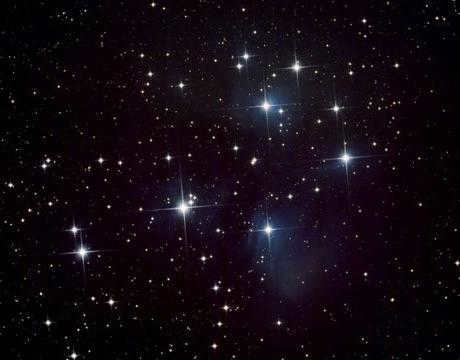
Exploring the Topic of Stars Further
For older children who may be curious about why the sun shines during the day and the stars are visible at night, we can delve deeper into the subject by discussing constellations. These are clusters of stars that appear to be grouped together in the sky. However, in reality, they can be located at vast distances from each other. If we were able to travel far beyond our solar system, the familiar patterns of constellations would undergo significant changes.
The groups of stars were observed to have the shapes of human figures, objects, and animals, which led to the creation of different names. Some of these famous constellations include the Big and Little Dipper, Orion, Swan, Southern Cross, and many others. Currently, there are a total of 88 constellations, each with their own myths and legends associated with them.
Due to the movement of the constellations, their positions in the sky change over time, and some are only visible during specific seasons. Certain constellations can only be seen from either the Northern or Southern Hemisphere.
As time passed, some constellations lost minor stars, making it difficult to determine the origins of their names based on their patterns. One of the most well-known constellations in the Northern Hemisphere, the Big Dipper, has now become known simply as a “dipper.” This has caused confusion among modern children who wonder, “Where is the bear?”
In 2013, a remarkable occurrence took place in the field of astronomy. Researchers observed the luminosity emitted by a star that underwent a cataclysmic explosion… 12 trillion years ago, during the Dark Ages of the Universe – a term used by astronomers to describe the one-billion-year period following the Big Bang.
At the time of the star’s demise, our planet had not yet come into existence. It is only now that inhabitants of Earth have come across its radiant energy – after billions of years traversing the cosmos, bidding adieu.
What is the reason for the luminosity of stars?
The luminosity of stars is a result of their inherent characteristics. Each star is a colossal sphere of gas that is held together by the forces of gravity and internal pressure. Deep within the star, there are incredibly intense thermonuclear fusion reactions taking place, causing the temperature to soar to millions of kelvins.
It is this unique structure and process that gives rise to the magnificent glow emitted by these celestial bodies, allowing their light to traverse distances of trillions of kilometers (such as the closest star to the Sun, Proxima Centauri, which is located 39 trillion kilometers away) over the course of billions of years.
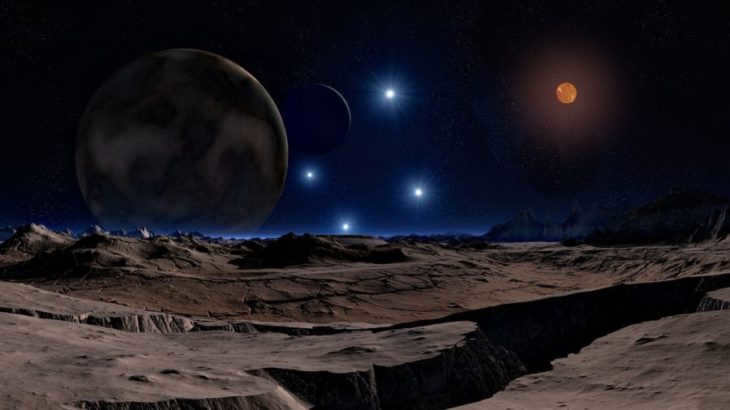
Some of the most prominent stars that can be seen from Earth include Sirius, Canopus, Toliman, Arcturus, Vega, Capella, Rigel, Altair, Aldebaran, and various others.
The visible color of stars is influenced by their brightness levels, with blue stars being the most intense, followed by blue-white, white, yellow, yellow-orange, and orange-red stars.
What is the reason for the absence of stars in the daytime sky?
The absence of stars during the day is primarily due to the presence of the Sun, which is the closest star to us and is part of our solar system. Despite not being the brightest or largest star, the proximity between the Sun and Earth is so small on a cosmic scale that sunlight completely illuminates our planet, overpowering any other dim sources of light such as stars.
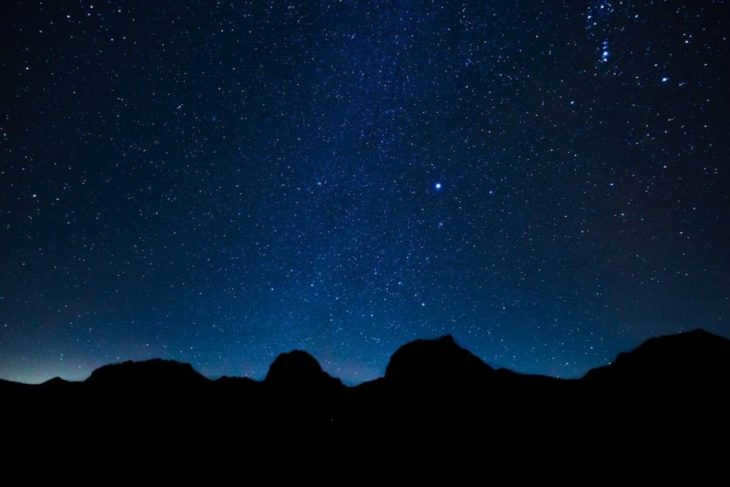
To observe the phenomenon described above firsthand, you can conduct a simple experiment. Create perforations in a cardboard box and insert a light source (such as a table lamp or flashlight) inside. When placed in a dark room, the perforations will emit a glow resembling small stars. Now, “turn on the Sun” by activating the overhead room light, and the “cardboard stars” will vanish.
This simplified mechanism serves as a complete explanation for why starlight is not visible during the daytime.
Can stars be observed during the daytime from the depths of mines or deep wells?
Although stars are not visible during the day, they are still present in the sky. Unlike planets, stars remain stationary and can be found at the same position.
There exists a legend suggesting that daytime stars can be spotted from the bottom of deep wells, mines, or even wide stovepipes that are tall enough to accommodate a person. This belief persisted for centuries, from the time of Aristotle, an ancient Greek philosopher who lived in the 4th century BC, to John Herschel, an English astronomer and physicist of the 19th century.
One would think that it is a simple matter to verify this claim by descending into a well or mine to observe the stars. However, despite the persistence of the legend, it has been proven false. Stars cannot be seen from the depths of a mine simply because the necessary conditions for observation do not exist.
It appears that the brightness of the stars is caused by the configuration of our eye, where the fibrous structure of the crystalline lens refracts light. When we observe the stars through a small aperture, we allow only a slender beam of light to enter the lens, which passes through the center with minimal distortion. Consequently, the stars manifest themselves as minuscule dots, radiating their true colors.
Our cosmos is composed of numerous trillion galaxies. The solar system lies within a rather expansive galaxy, with the overall quantity of galaxies in the Universe being limited to a few tens of billions.
Our galaxy is home to a staggering 200-400 billion stars. The majority of these stars, around 75%, are dim red dwarfs. Only a small percentage of the stars in our galaxy share similarities with yellow dwarfs, which is the spectral type of stars that our Sun belongs to. From the perspective of an Earth observer, our Sun is a mere 270,000 times closer than the nearest star. As the distance decreases, so does the luminosity, resulting in the Sun appearing 25 star magnitudes or 10 billion times brighter than the nearest star. This intense brightness from the Sun prevents any other stars from being visible in the daytime sky. A similar challenge arises when attempting to photograph exoplanets near nearby stars. In addition to the Sun, other objects that can be seen during the day include the International Space Station (ISS) and the flashes of satellites from the first constellation Iridium. This is due to the fact that the Moon, some artificial satellites, and the ISS appear much brighter in the Earth’s sky compared to the brightest stars. For example, the Sun has an apparent brilliance of -27 star magnitudes, while the Moon in its full phase has a brilliance of -13. The flashes from satellites of the first constellation Iridium have a brilliance of -9, the ISS has a brilliance of -6, Venus has a brilliance of -5, Jupiter and Mars have a brilliance of -3, Mercury has a brilliance of -2, and Sirius, the brightest star, has a brilliance of -1.6.
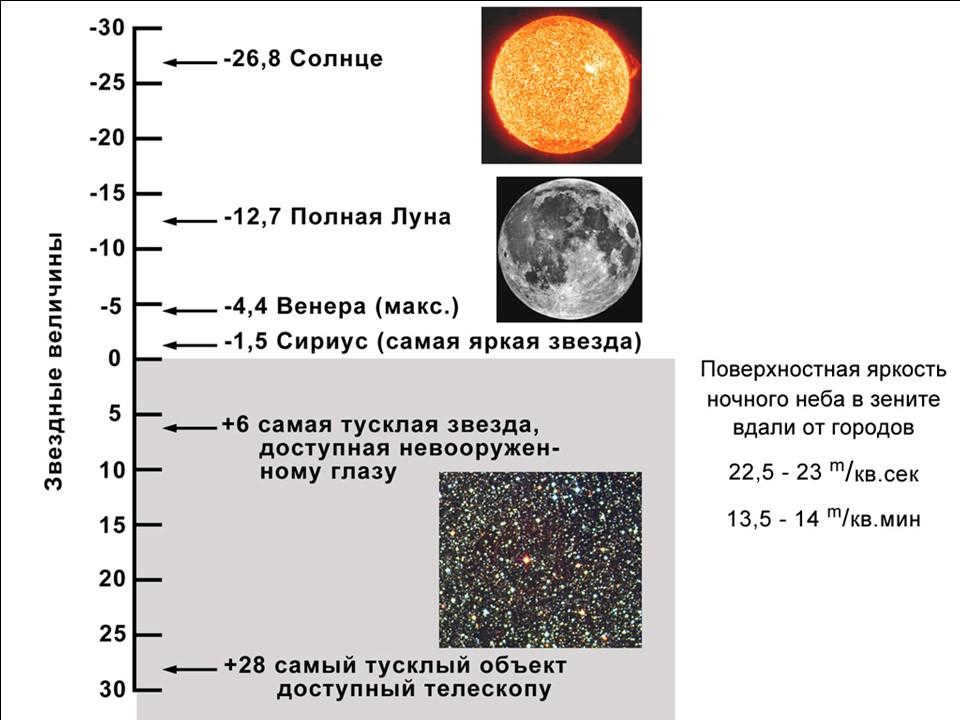
The logarithmic scale is used to measure the apparent brightness of different celestial objects. Each increase of one stellar magnitude represents a 2.512-fold increase in brightness, while a difference of 5 stellar magnitudes corresponds to a 100-fold difference in brightness.
What is the reason for the inability to see stars in urban areas?
Aside from the challenge of observing stars during the day, there is also the issue of observing stars at night in populated areas, such as near large cities and industrial sites. The cause of this light pollution is artificial radiation, including street lights, illuminated billboards, industrial flares, and event spotlights.
In February 2001, John E. Bortle, an amateur astronomer from the United States, developed a light pollution scale to assess the level of light pollution in the sky. This scale, published in the journal Sky&Telescope, consists of nine categories:
1. An extremely dark sky
In this kind of night sky, not only can you see the Milky Way clearly, but you can also see the individual clouds of the Milky Way casting distinct shadows. Additionally, you can see the zodiacal light in great detail, along with the antisun phenomenon (which is the reflection of sunlight from dust particles on the opposite side of the Sun-Earth line). Stars with a magnitude of up to 8 are visible to the naked eye, and the overall brightness of the sky is measured at 22 star magnitudes per square angular second.
Featuring a stunning night sky, this display offers a remarkable view of the Milky Way and the zodiacal light, as well as the antiscia. With the naked eye, you can observe stars with apparent brightness of up to 7.5 star magnitudes, while the background sky brightness measures around 21.5 star magnitudes per square angular second.
3. Countryside sky
In this particular sky, the zodiacal light and the Milky Way remain clearly visible, albeit with less intricate detail. The naked eye can perceive stars up to 7 star magnitudes, while the background sky brightness averages around 21 star magnitudes per square angular second.
4. The sky in the transitional zone between rural and suburban areas
In this particular region of the sky, one can still observe the presence of the Milky Way and zodiacal light, although with limited visibility and less intricate details. These celestial phenomena are only partially visible when looking upwards towards the horizon. When observing with the naked eye, stars with a magnitude of up to 6.5 can be seen, while the overall brightness of the sky reaches approximately 21 star magnitudes per square angular second.
5. The atmosphere above urban areas
The presence of zodiacal light and the Milky Way in the sky above cities is a rare occurrence, only visible during perfect weather and specific seasons. The naked eye is only able to see stars with a magnitude of up to 6, and the overall brightness of the sky is measured at approximately 20.5 star magnitudes per square angular second.
6. The suburban sky
The sky above suburban areas lacks the presence of zodiacal light and the Milky Way is only faintly visible directly overhead. With the naked eye, stars up to 5.5 magnitudes can be seen, while the overall brightness of the sky is around 19 magnitudes per square angular second.
Under any circumstances, it is impossible to observe the zodiacal light or the Milky Way in this type of sky. The stars visible to the naked eye are limited to those with a magnitude of 5 or less, and the overall brightness of the sky is equivalent to 18 star magnitudes per square angular second.
8. Urban sky
In an urban sky, only a small number of the brightest scattered star clusters can be seen without the aid of a telescope. The naked eye is able to detect stars with a magnitude of 4.5 or less, and the background sky brightness is lower than 18 star magnitudes per square angular second.
9. The skyline in urban areas
In urban areas, the skyline often obstructs the view of star clusters. The naked eye is only able to see stars up to a magnitude of 4.
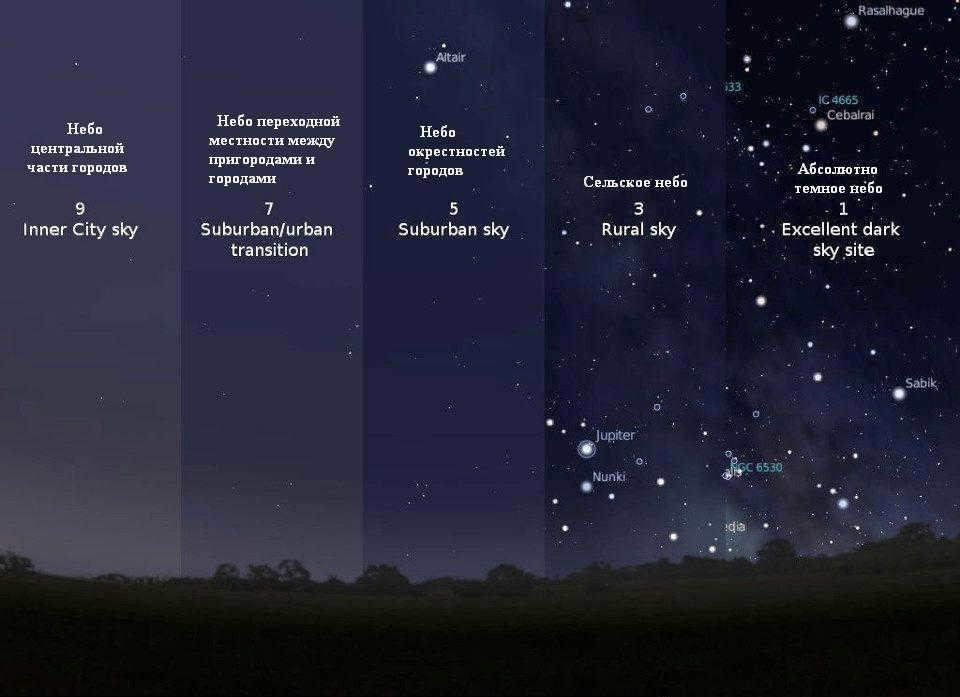
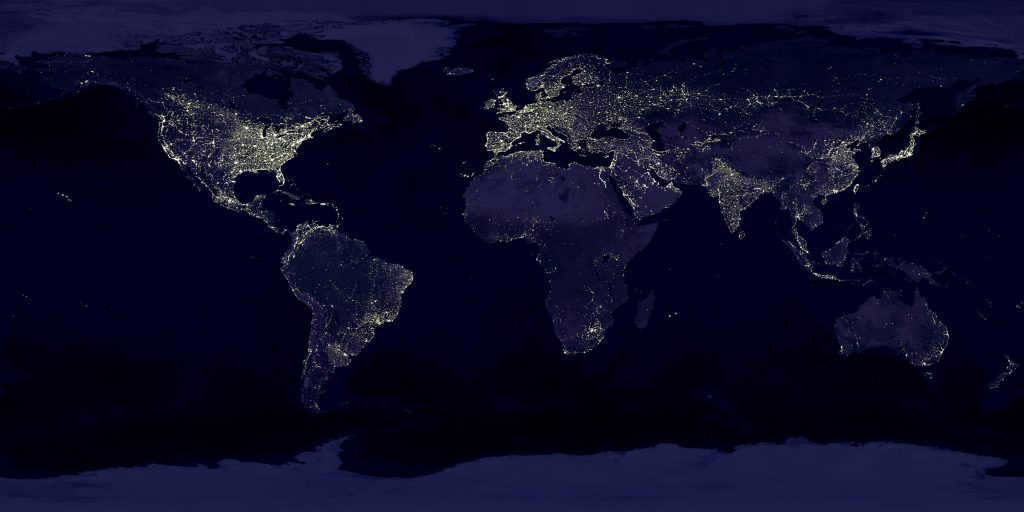
The image obtained from NASA provides a clear visualization of the regions in Western Europe, the eastern portion of the continental United States, Japan, the coastal areas of China, the Middle East, Indonesia, India, and the southern coast of Brazil, which are strongly illuminated. Conversely, the polar regions, particularly Antarctica and Greenland, along with the regions surrounding the World Ocean, the basins of the Amazon and Congo rivers, the elevated Tibetan plateau, the desert regions of northern Africa, central Australia, and the northern areas of Siberia and the Far East exhibit minimal artificial light.
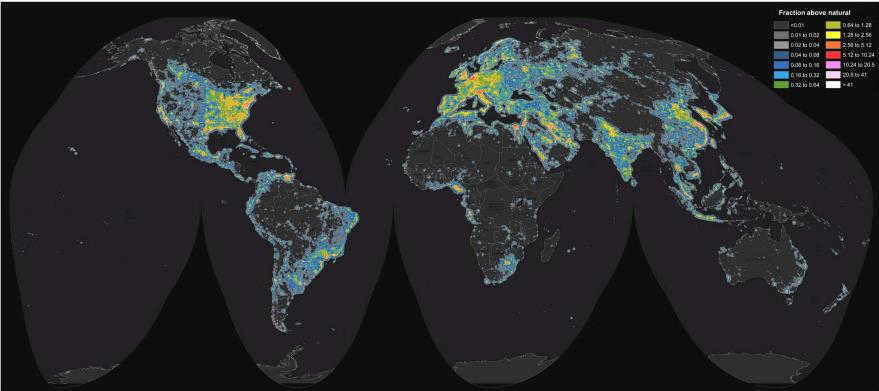
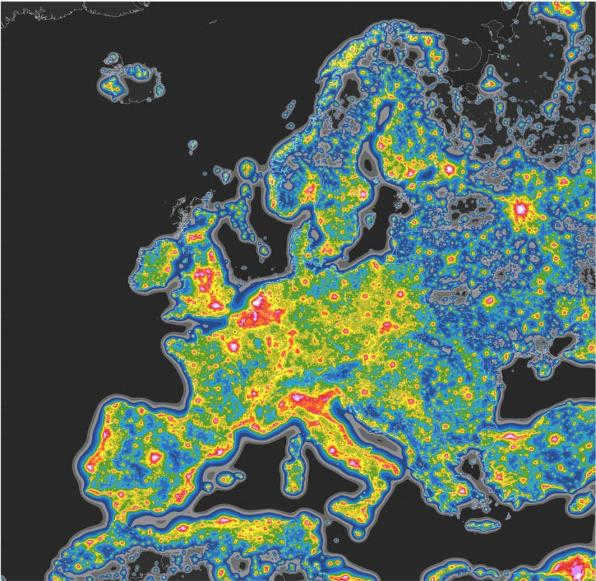
The absence of dark sky is most prominent in Singapore (100%), Kuwait (98%), the United Arab Emirates (UAE) (93%), Saudi Arabia (83%), South Korea (66%), Israel (61%), Argentina (58%), Libya (53%), and Trinidad and Tobago (50%). In Singapore, San Marino, Kuwait, Qatar, and Malta, as well as in the UAE (99%), Israel (98%), and Egypt (97%), the residents are unable to observe the Milky Way. The countries with the largest areas where the Milky Way is not visible include Singapore and San Marino (100% each), Malta (89%), the West Bank (61%), Qatar (55%), Belgium and Kuwait (51% each), Trinidad and Tobago, the Netherlands (43%), and Israel (42%).
However, there are several countries and territories that have very low levels of light pollution. For example, Greenland, with only 0.12% of its territory affected by light pollution, stands out as one of the least polluted areas. Similarly, the Central African Republic (CAR) with 0.29%, the Pacific territory of Niue with 0.45%, Somalia with 1.2%, and Mauritania with 1.4% also have minimal light pollution.
Despite the ongoing expansion of the global economy and the rising levels of energy consumption, there has also been a remarkable surge in the education of the populace. A notable instance of this can be seen in the annual international Earth Hour campaign, which takes place on the last Saturday of March and encourages the majority of the population to switch off their lights. Originally conceived by the World Wildlife Fund (WWF) as a means to promote energy conservation and combat greenhouse gas emissions (in the fight against global warming), the campaign has also gained traction for another reason – the desire to create a more astronomically-friendly environment in megacities, even if only for a brief period of time. The campaign was first launched in Australia in 2007 and quickly spread worldwide the following year. With each passing year, the campaign garners an increasingly larger number of participants. In 2007, the action saw the involvement of 400 cities from 35 countries, while in 2017, more than 7,000 cities from 187 countries joined in.
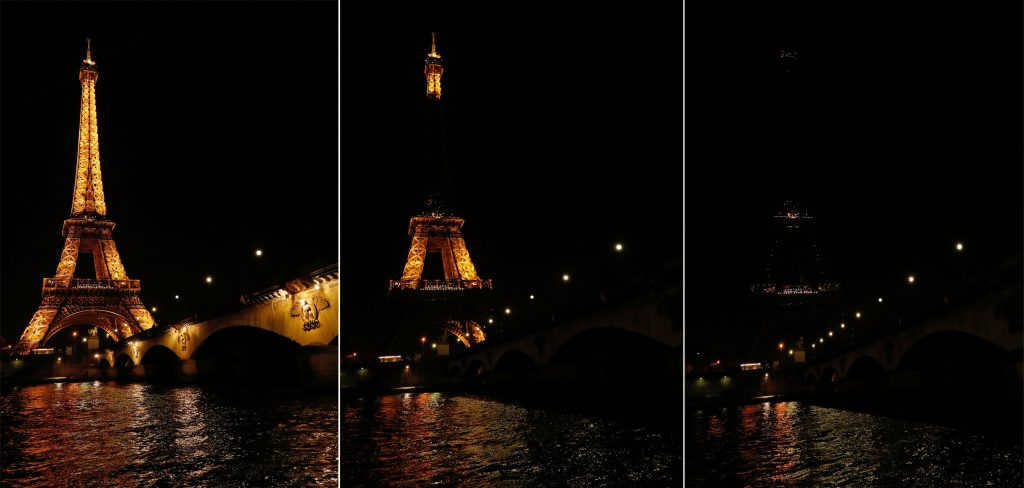
Nevertheless, it is feasible to observe the drawbacks of this measure, which involve the heightened potential for accidents in global energy systems as a result of the abrupt simultaneous powering off and on of a vast array of electrical devices. Additionally, data indicates a significant connection between the absence of street illumination and the surge in injuries, street criminal activity, and other unforeseen incidents.
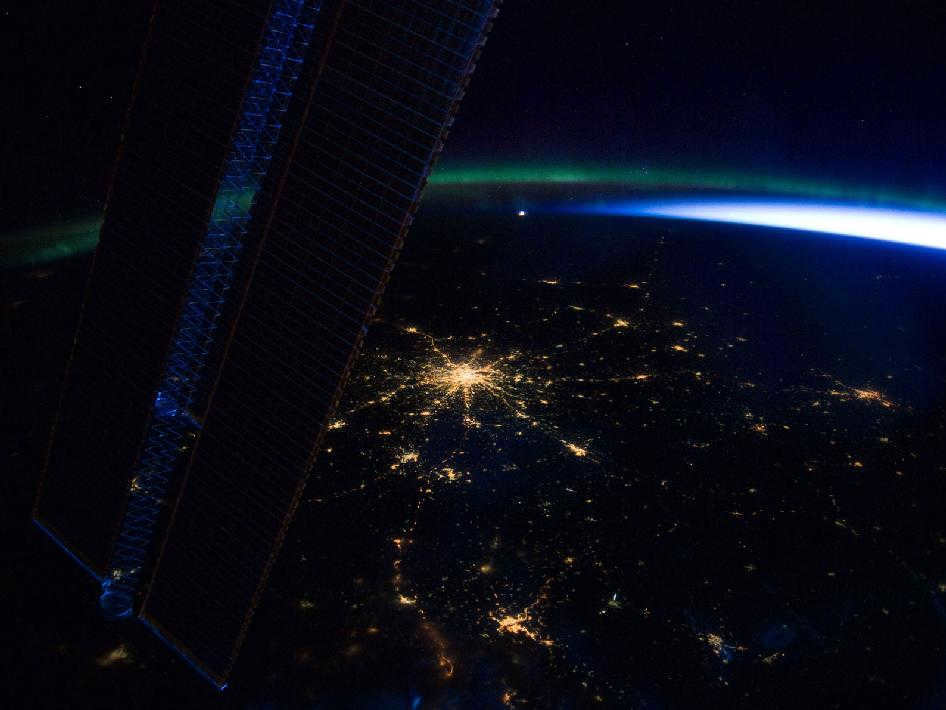
The picture clearly depicts the illuminated city lights of Moscow, the greenish hue of the aurora borealis on the horizon, and the lack of visible stars in the night sky. The significant disparity in brightness between the Sun and even the most luminous stars renders star observation impossible not only during daylight hours from the Earth’s surface but also from outer space. This observation effectively highlights the extent of “light pollution” emanating from the Sun in comparison to the atmospheric impact on astronomical studies. However, the absence of stars in photographs of the sky taken during manned missions to the Moon has become a prominent piece of evidence fueling the conspiracy theory that NASA astronauts never actually made it to the Moon.
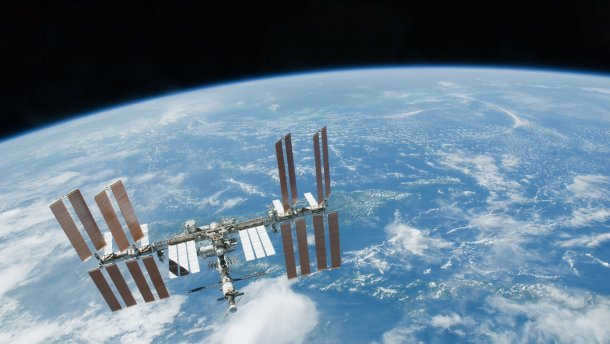
What is the reason for the absence of stars in Moon images?
When comparing the apparent brightness of the Sun and the brightest star, Sirius, in the Earth’s atmosphere, there is a difference of approximately 25 star magnitudes, which is equivalent to a difference of 10 billion times. However, when it comes to comparing the apparent brightness of the full Moon and the brightness of Sirius, this difference decreases to 11 star magnitudes, or approximately 10 thousand times.
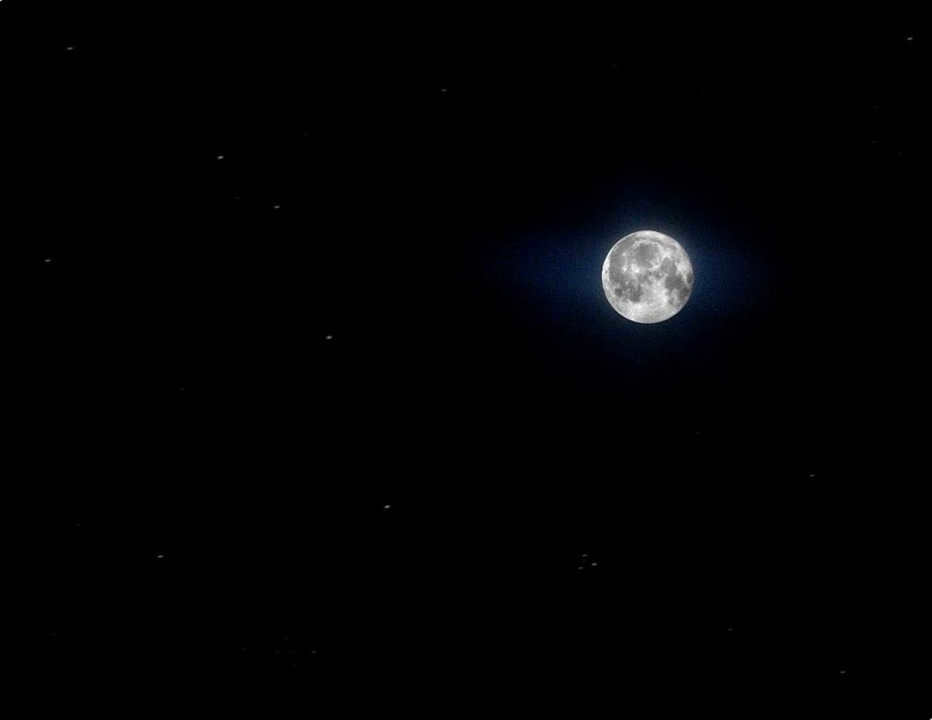
Did you enjoy reading this article? Share it with your friends!
Stars are the fundamental entities of the observable universe. The cosmic realm is remarkable and varied. The subject of these celestial luminaries is endless. The sun was designed to illuminate the day, while the stars were designed to guide us in the darkness of night. This article will explore the formation of the light that emanates from these incredible celestial objects.
Birth
The process of a star’s birth and death can be observed in the night sky, providing a captivating visual spectacle. Astronomers have dedicated extensive research to these phenomena, resulting in numerous groundbreaking discoveries. Detailed accounts of these findings can be found in specialized scientific literature. Stars, these magnificent celestial bodies, are colossal fireballs that emit a mesmerizing array of colors and shimmer.
These stellar entities originate from a diffuse gas-dust medium, which undergoes gravitational compression in denser layers, aided by the force of gravity. The interstellar medium primarily consists of gas, predominantly hydrogen and helium, along with solid mineral particles in the form of dust. The Sun, our primary source of light, is a star crucial for the existence of life on our planet. Interestingly, many stars surpass the Sun in size, yet their impact on our daily lives is not felt, and we can thrive without them.
Stars are only visible as small points of light in the nighttime sky. But have you ever wondered why we can’t see them during the day? It’s because starlight is similar to the rays of a flashlight – they are hardly noticeable when the sun is shining, but at night they become indispensable, illuminating our path.
When are the stars at their brightest in the nighttime sky and what makes them shine?
The best time for stargazing is in August. During this month, the nights are darker and the air is clearer, creating the perfect conditions for observing the stars. It feels as though you can almost touch the sky. Children, when they look up into the night sky, often wonder why the stars shine and where they come from. In August, people often gather to stargaze, as it is a captivating and extraordinary sight that captures both our eyes and our souls. There is a belief that if you see a shooting star, you should make a wish, and it will surely come true.
Nevertheless, it is intriguing to note that what appears to be a falling star is actually a meteor ablaze. Regardless, this spectacle remains incredibly captivating! As time passes and one generation replaces another, the sky remains constant – enchanting and enigmatic. Just as our predecessors did, we gaze upon it, imagining mythological figures and objects in the clusters of stars, making wishes and dreaming.
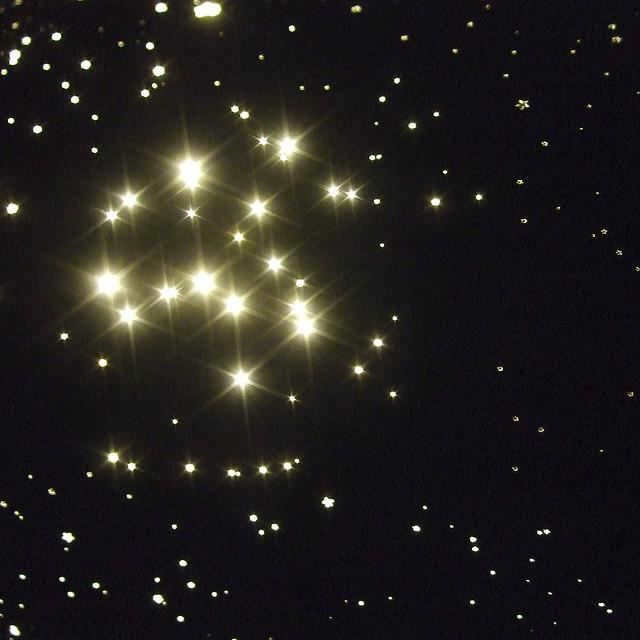
What causes the appearance of light?
Stars, which are cosmic objects, emit an immense amount of heat energy. This energy emission is accompanied by a strong emission of light. Some of this light reaches our planet, allowing us to observe it. This is the simple answer to the question: “Why do stars shine in the sky, and do all other celestial bodies emit light?”. For instance, the Moon is Earth’s satellite, and Venus is a planet in our solar system. We do not see their own light, but only the light that is reflected off them. Stars, on the other hand, are the actual source of light radiation as a result of energy release.
Various celestial objects emit light in different colors, including white, blue, orange, and even shimmering hues. The reason for this variation lies in the composition and temperature of these objects. Stars, for instance, are colossal spheres comprised of heated gases. Due to the fluctuations in their temperature, stars emit light with various luminosities, resulting in a range of colors. The hottest stars tend to radiate a vibrant blue hue, followed by white. Cooler stars emit a yellow glow, while stars with even lower temperatures appear orange or red.
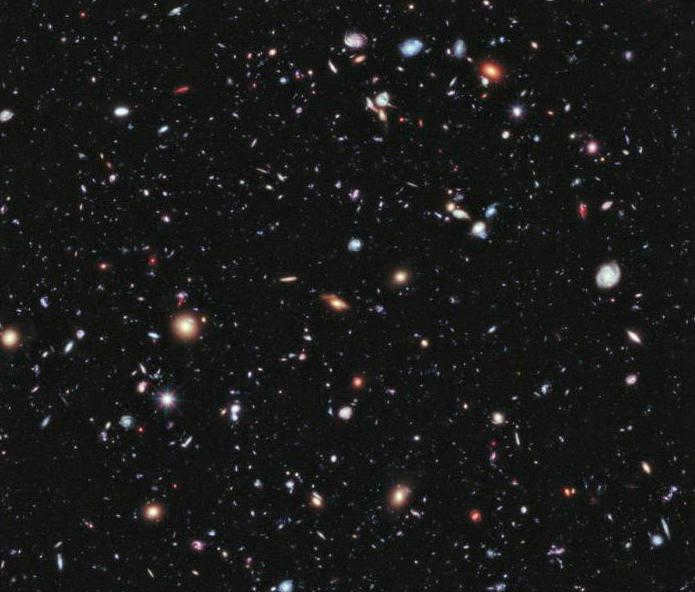
Glimmering
A question that often arises is: why do stars shimmer in the night sky and their brightness fluctuates? Let me clarify – stars do not actually twinkle. It is merely an illusion to our eyes. The reason behind this phenomenon lies in the starlight passing through the Earth’s atmosphere. As the light beam traverses such long distances, it encounters numerous refractions and alterations. These refractions, to us, manifest as glimmers.
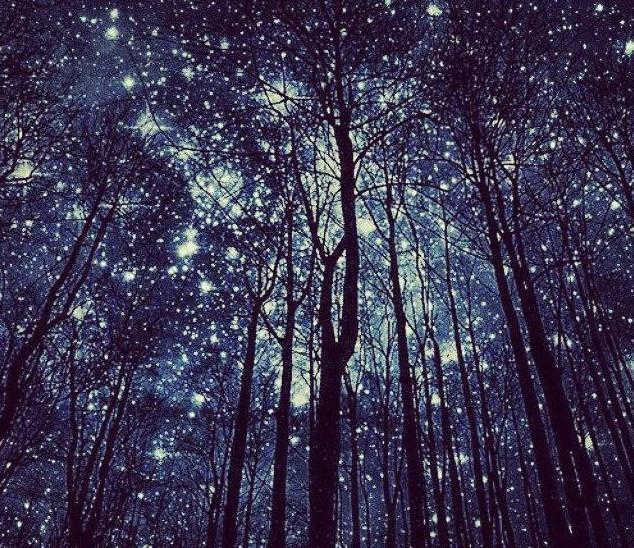
A star undergoes a life cycle in which it changes its brightness at different stages. As it approaches the end of its life, it transforms into a red dwarf and gradually cools down. The dying star emits pulsating radiation, creating the illusion of flickering or blinking. During the daytime, the star’s light is overshadowed by the intense brightness of the sun, causing it to be invisible. However, at night, when there are no sun rays, we are able to observe the stars in the sky.
Date: April 25, 2018, Author: admin Topics: reddit, astronomy, stars, cosmos, photography, Photography, Photography Techniques
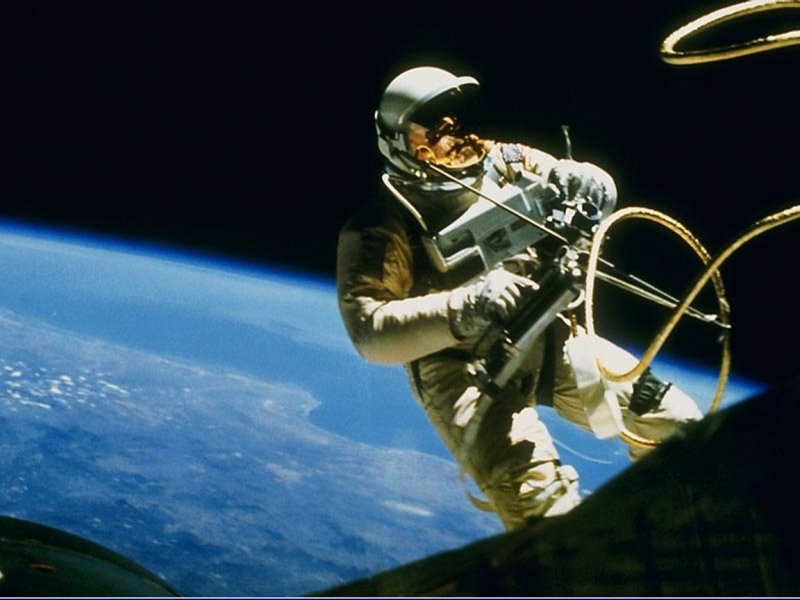
In the “Space” thread on Reddit, one question that keeps coming up is, “Why is it not possible to see stars in photographs?” Usually, this question pertains to photos taken during the Apollo moon landings or by Earth satellites, but sometimes it applies to pictures of Jupiter or the moon. Recently, there have been numerous Falcon Heavy Starman photos circulating on the platform.
I constantly reminded myself that I should write a layman’s explanation, but I always found myself short on time. However, one comment asking the same question for the millionth time finally convinced me to do it. Now, whenever someone asks about this, I can simply provide them with a link to this explanation.
So, here it is. An elucidation of why numerous space photographs do not capture stars, from the perspective of the photographer.
The fundamentals: cameras and exposure settings
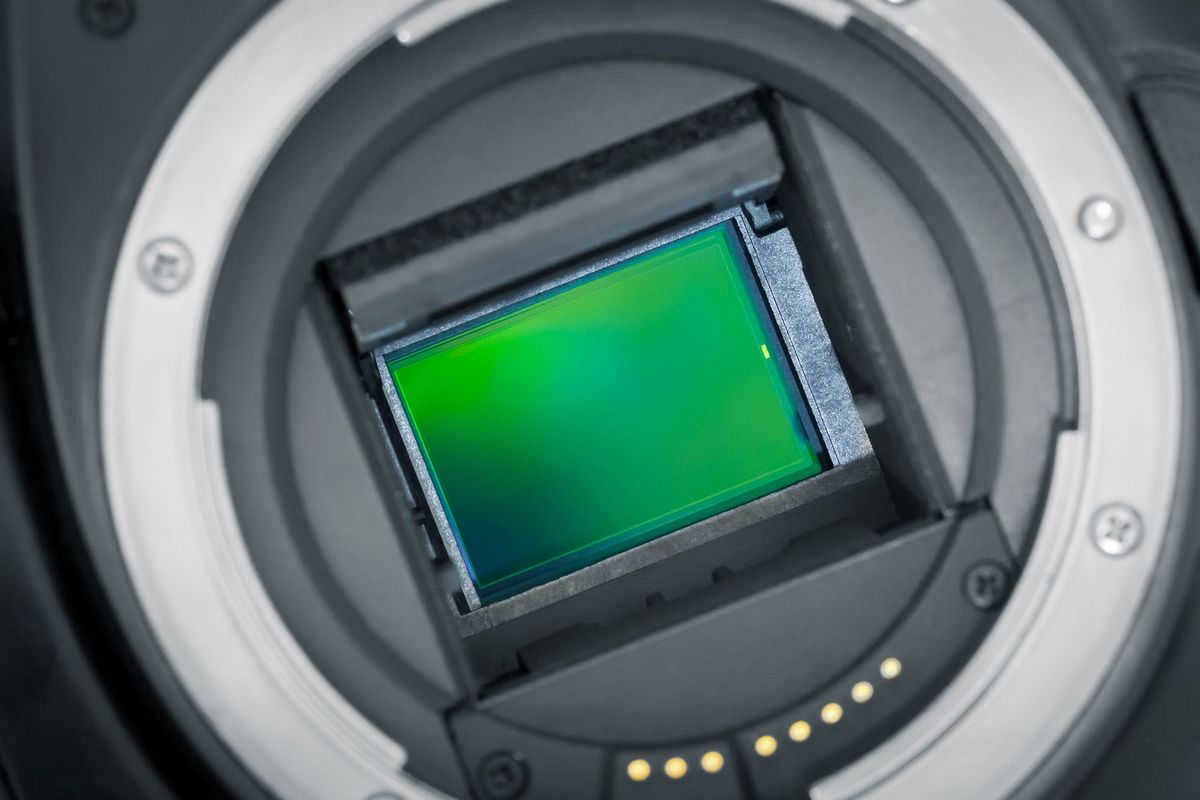
When taking a photograph, the camera lens allows light to pass through and reach the sensor or film. The sensor is made up of numerous tiny photocells that capture particles of light known as photons. To put it simply, each photocell corresponds to a pixel in the final image, and the brightness of that pixel is determined by the number of photons it captures. In the resulting photograph, areas that appear darker indicate places where fewer photons collided with the sensor, while lighter areas indicate places where more photons were collected. Think of these photocells as buckets collecting photons – the bucket that captures more photons will produce a lighter shade in the final image.

Doubling the time the shutter is open changes it from 1/500 to 1/250 of a second. Another doubling results in 1/125 of a second. This is equivalent to the exponent being squared. An exposure of 1/125 is two steps further than 1/500, but captures four times as much light. Doubling again, to an exposure of 1/60 (these are approximate values), means three steps, but eight times as much light. It turns out that the right photo received 16 times more light than the left, which is equivalent to a four-step increase in exposure.
In addition to the shutter speed, there are two other methods to adjust the amount of light reaching the photo sensor: changing the lens aperture or ISO. The aperture refers to the size of the opening through which light passes.
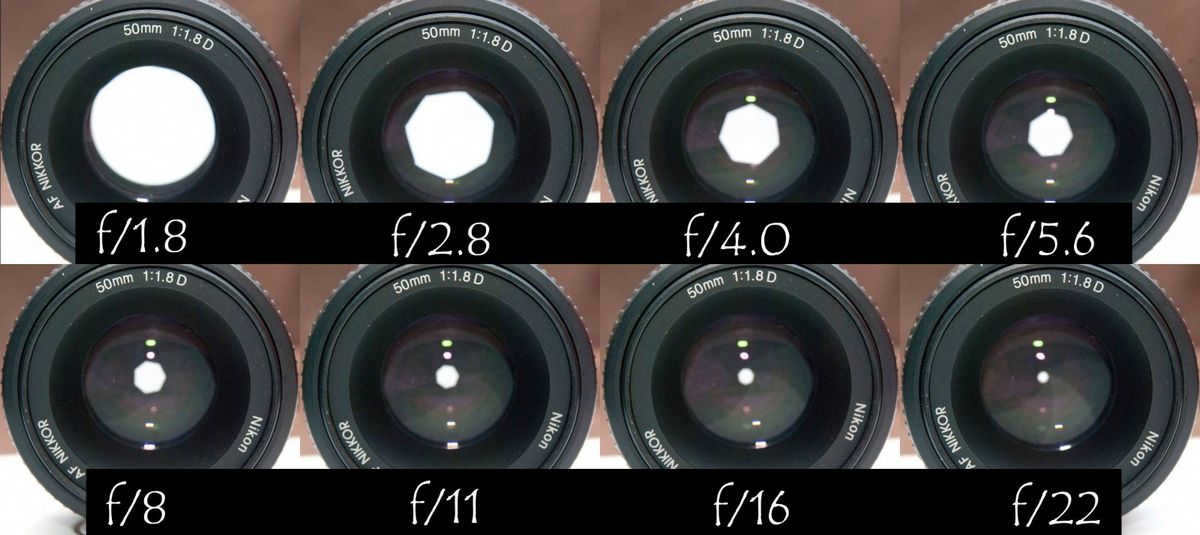
Do not pay attention to the figures, just take note that the larger the aperture, the more light passes through it. ISO measures the camera’s sensitivity to light, and functions in a similar manner to exposure numbers – ISO 200 is twice as sensitive as ISO 100, and ISO 4000 is twice as sensitive as ISO 200.
Range of Light
In the photo displaying the various shutter speeds, it is evident in the furthest right image that there is a lack of detail in the bright areas, such as the sky and clouds. These areas appear as a uniform white blur. The camera’s sensors have a limited capacity to capture brightness, and the highest level of brightness in the photo appears as pure white. Once the camera’s photocell reaches this level of exposure, increasing the number of photons absorbed by the cell will not result in a brighter image. To illustrate this concept, imagine photocells as buckets – when a bucket is full, adding more photons will not cause it to overflow. When the brightness of the scene exceeds the limit of the photocells, the result is large white highlights without any discernible detail, as depicted in the photo above.
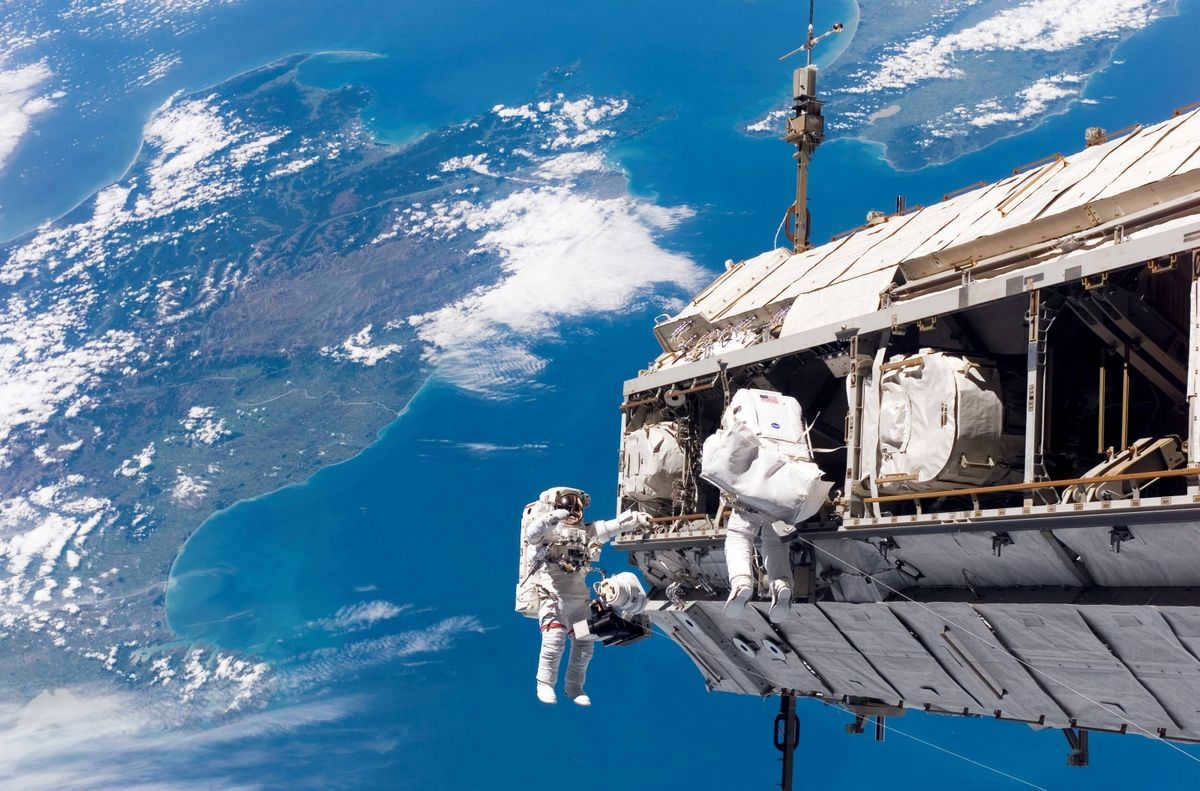
In this photograph depicting astronauts conducting work on the International Space Station (ISS), one can observe the presence of backlights. The astronaut facing away from the camera showcases significant regions of pure white on both his spacesuit and toolbox. These areas of pure white can also be observed on the brightest segments of the ISS located at the top of the image.
Conversely, photocells possess a lower threshold for detecting light. Pixels represented by photocells that have not captured a sufficient number of photons will be rendered as black in the photograph. Diminishing the intensity of light to values below this threshold will not result in a darker pixel, as it is already as dark as it can be. One cannot empty a bucket more than it already is when it is completely empty.
Segments of the image that appear darker than this threshold will manifest as black spots devoid of any discernible details.
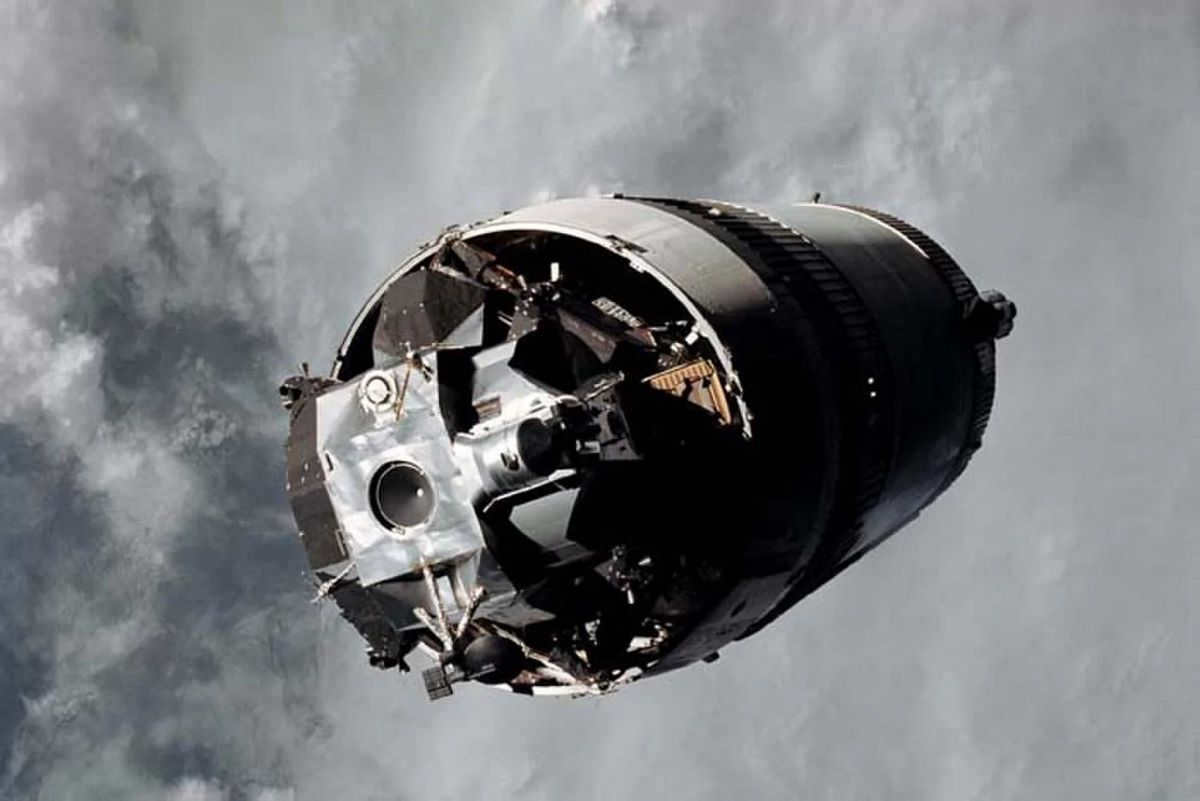

This photograph of the third stage and the Saturn 5 lunar module reveals numerous areas of shadows.
The dynamic range, which is the difference in luminance between the darkest blacks and the brightest whites, determines the camera’s ability to capture the details of an image. Anything below this range will appear black in the photo, while anything above it will appear white.
Modern digital cameras typically have a dynamic range of 10-15 exposure steps. You can refer to a list of the dynamic ranges of top-quality digital cameras to see specific values. The list labels the exposure steps as evs [exposure value]. Film generally has a similar dynamic range.
Photography in Daylight
It is crucial to comprehend that the images of celestial bodies, such as the moon and planets, including Earth, captured in photographs are taken during daylight and display the illuminated side of the object. In simpler terms, the object is lit up by the radiant rays of the sun.
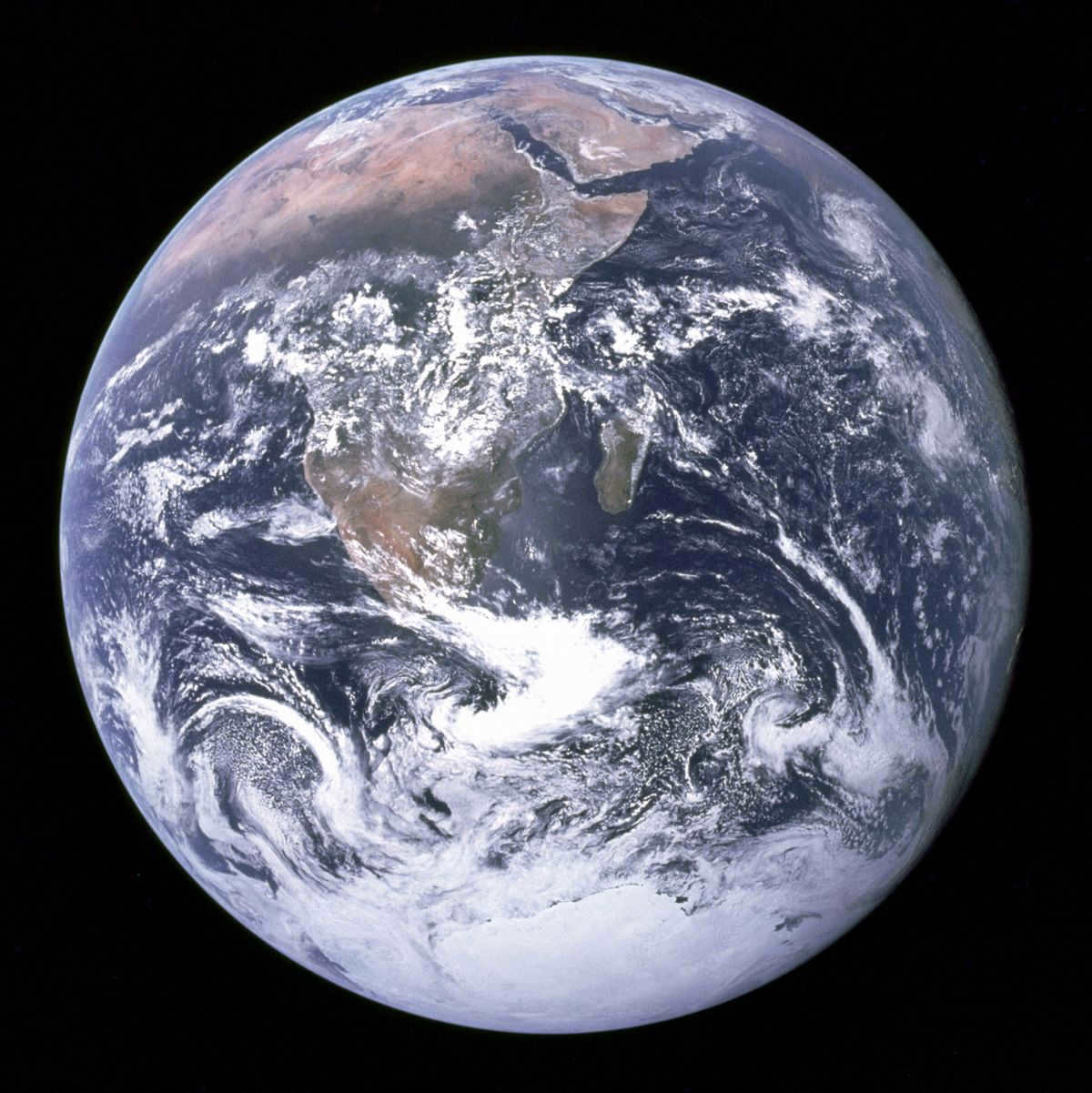
This image captured from space depicts the illuminated side of our planet, which faces the sun during the day.
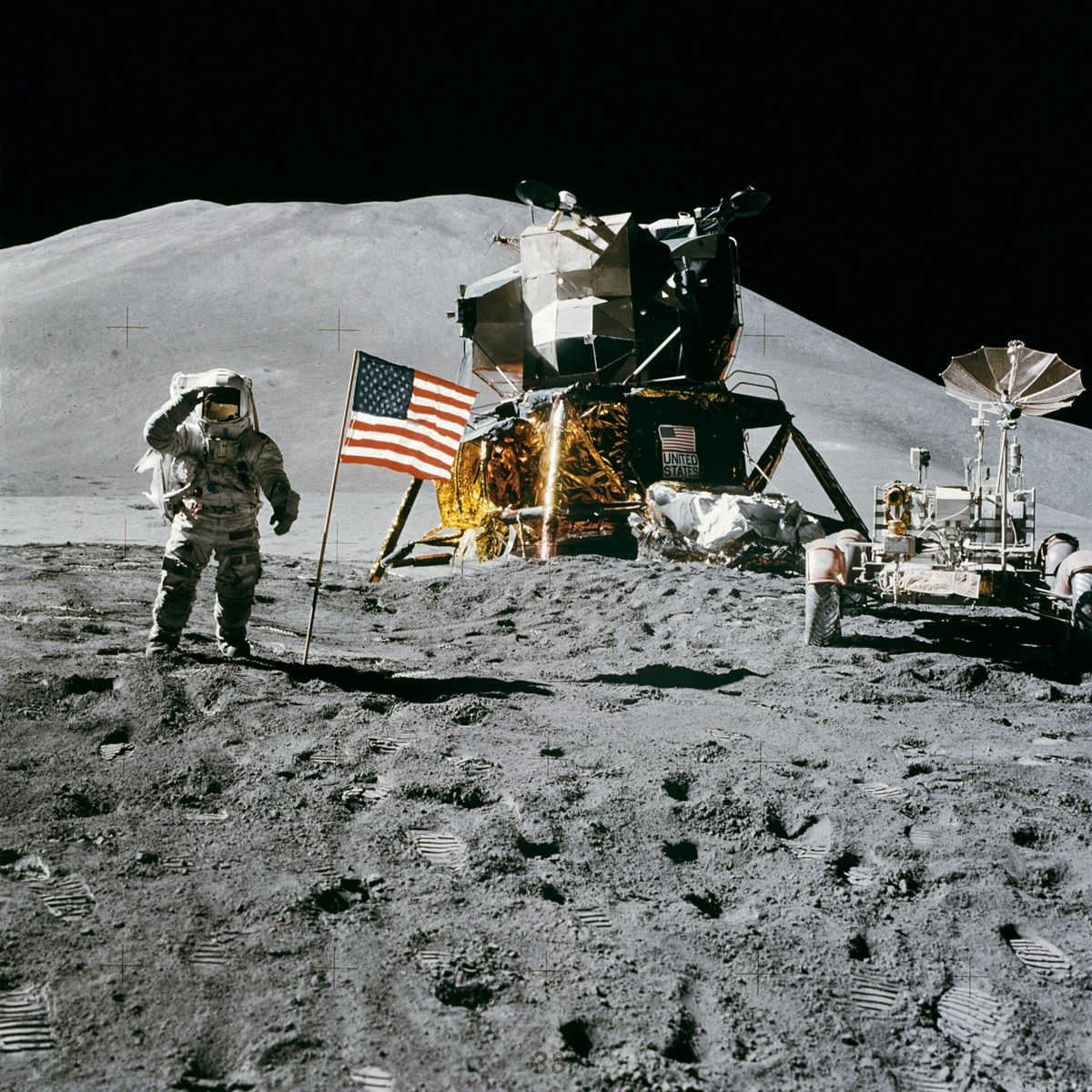

This image captured at the Apollo 15 landing site portrays a scene during daylight hours. Although the sky appears dark and the Moon seems to be viewed at night, this photo was actually taken on the side of the Moon that faces the sun. Consequently, the level of brightness in this area is equivalent to that experienced on Earth during the daytime.
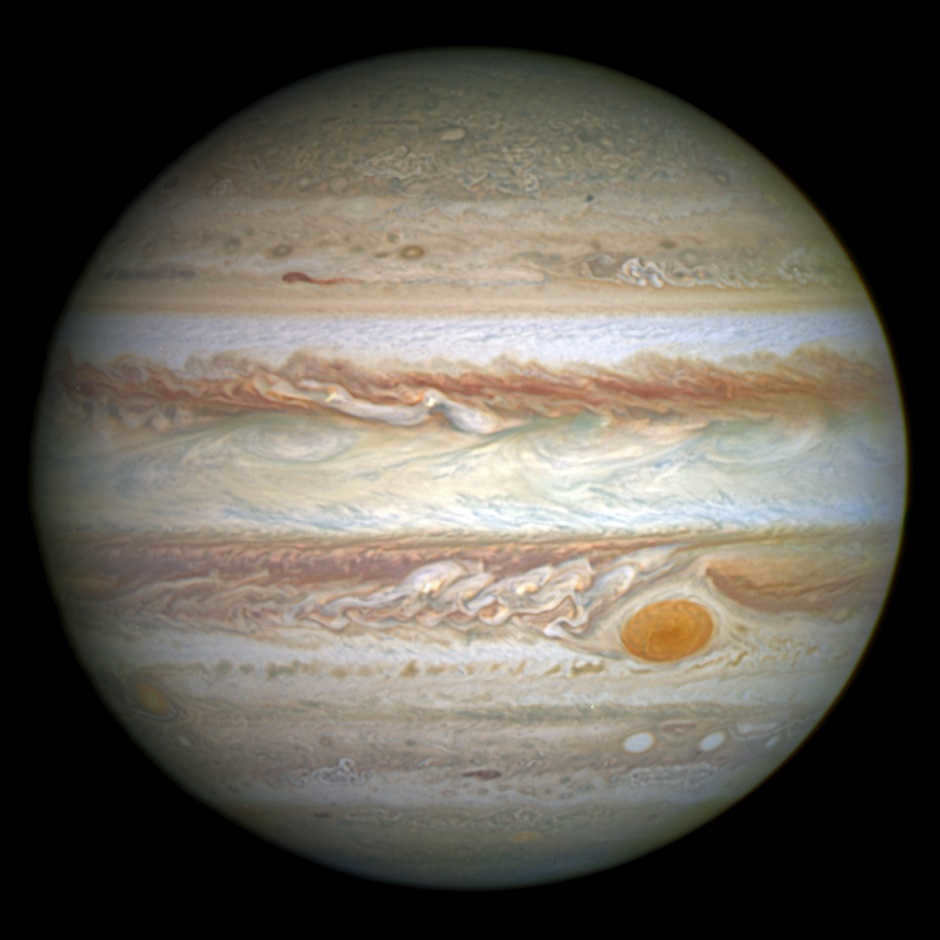
What you see in this image is Jupiter during the day, not at night. Although the sky appears dark, this photo captures the daytime side of the planet facing the Sun. Similarly, the recent SpaceX Tesla launch showcased the car being illuminated by the sun.
Now that we possess all the necessary information, let’s commence the process of comparing daytime images of Earth and Moon with nighttime images of stars. Initially, we will examine the parameters employed during the Apollo missions and other ground-based photographs of celestial objects taken in daylight. Subsequently, we will analyze the parameters utilized while capturing star images. Lastly, we will input the respective settings into the calculator and ascertain the number of exposure steps between the correctly exposed star images and the Apollo photographs and other daytime images of celestial objects.
If we discover that the disparity in exposure increments exceeds 15, it would imply that cameras capturing images of celestial objects such as the day side of the moon, the Earth, or other planets, as well as objects in daylight like Tesla, would be unable to capture images of stars. It is important to note that 15 represents the maximum difference between the brightest and darkest tones that a camera can capture, so the actual number of functional exposure increments between the subject and the darkest areas would be lower. This is because, in practice, one would typically choose a medium brightness exposure for the subject rather than the maximum. In the Earth photo displayed above, the planet’s brightness does not fall at the upper end of the brightness spectrum, thus the gap between the Earth’s brightness and the lower end of the dynamic range would not be 15 increments, but rather around 7. This is because the Earth falls somewhere in the middle of the photo’s dynamic range.
However, in order to streamline the calculations, we will simply utilize 15 steps as a benchmark – if the accurately selected exposure for stars differs by more than 15 steps from the accurately selected exposure for the Earth during daylight, or the Moon, or any other celestial body, then we can confidently conclude that no stars will be visible in these daytime photographs.
Seeking the Authentic Exposure Settings for Starlight
I have handpicked three stellar photographs from our subreddit to serve as prime examples of capturing the cosmos. Accompanying each image are the precise exposure settings meticulously documented by the photographers.
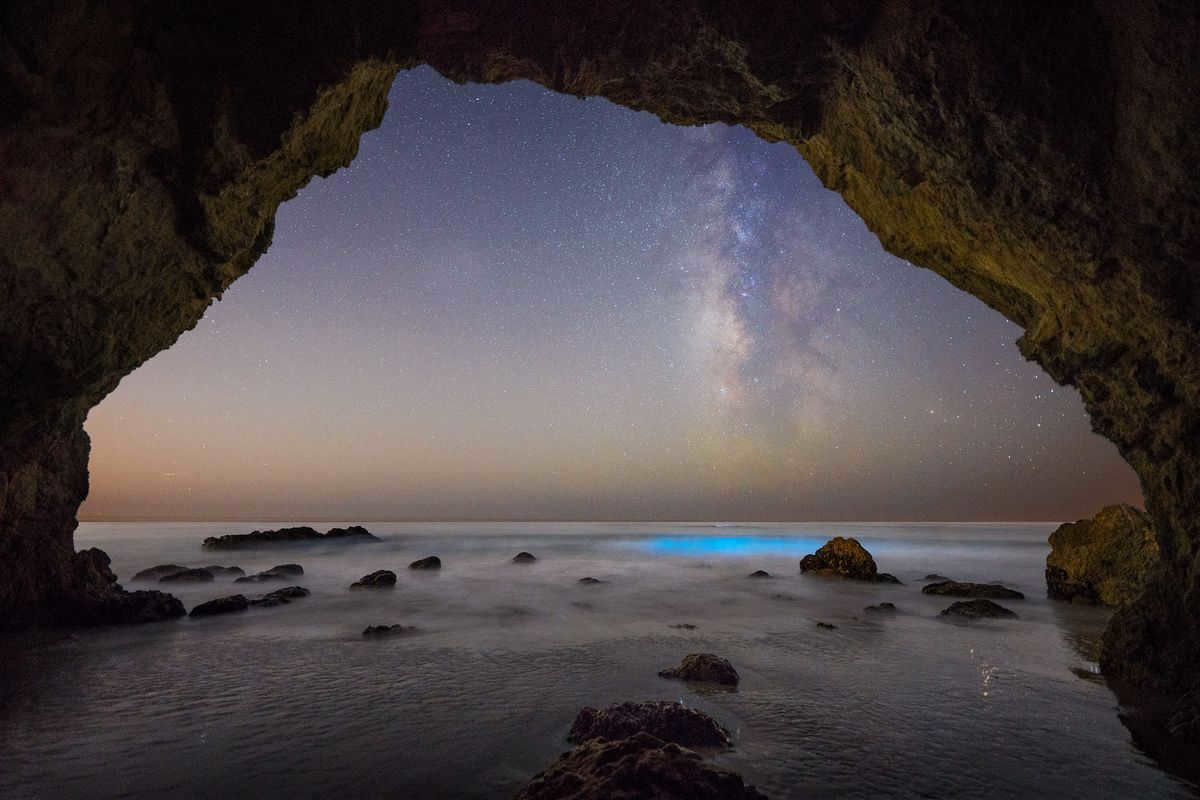
Malibu and the Milky Way both exhibit bioluminescence, with a shutter speed of 13 seconds, an aperture of f/1.8, and an ISO of 4000.
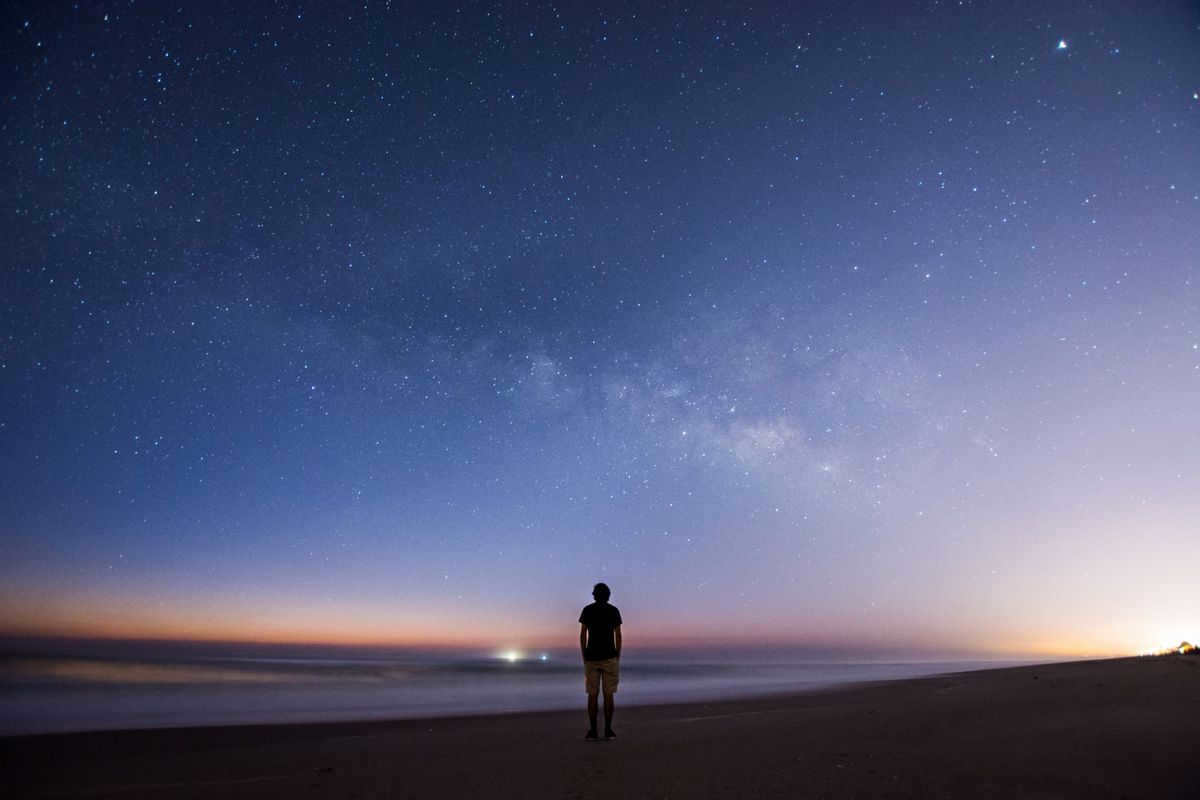
Before dawn, the Milky Way can be seen over the Atlantic. The photo was taken with a shutter speed of 25 seconds, aperture of f/3.5, and ISO of 2500.
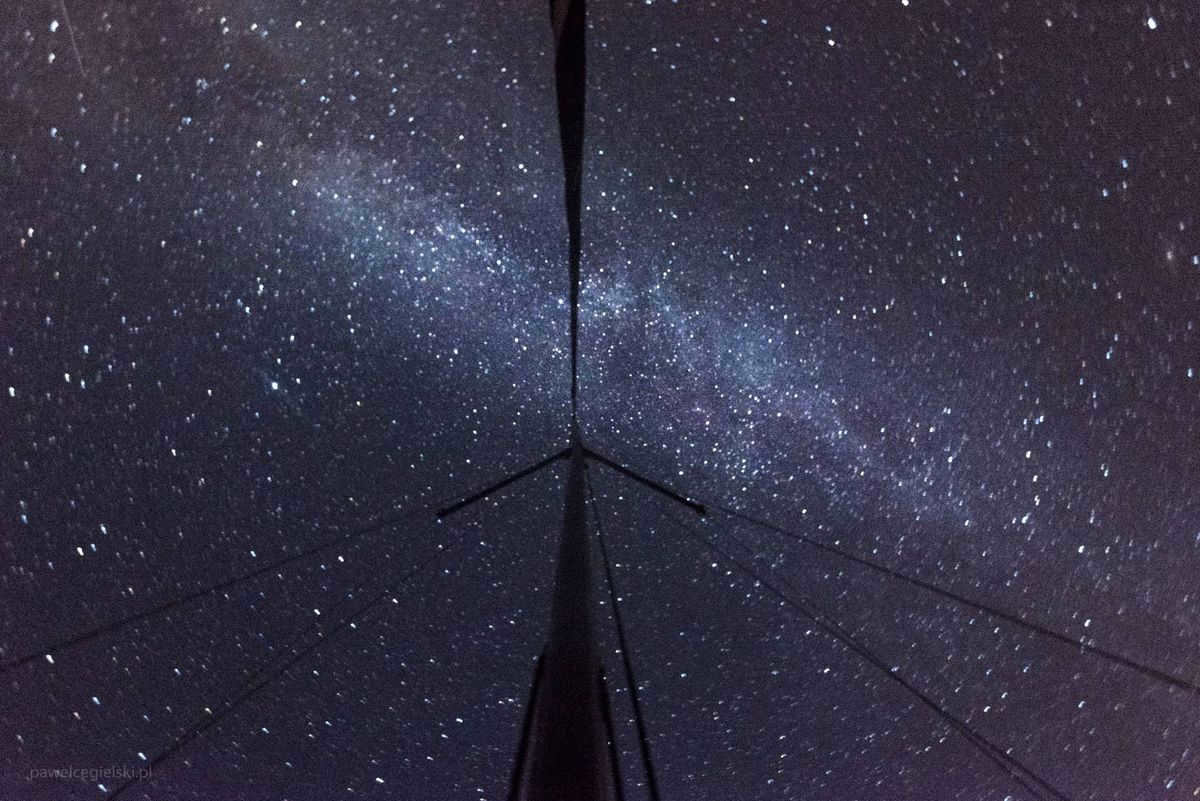
Milky Way over a yacht; shutter speed: 13 seconds, aperture: f/4.0, ISO: 6400
Searching for actual exposure settings – daylight
There is a popular photography principle known as the “Sunny 16” (or the F/16 rule), which suggests that to achieve the proper exposure for a photo taken in sunlight, you should set the aperture to f/16 and the shutter speed to the reciprocal of the ISO. For instance, a photo captured at ISO 100 should utilize a shutter speed of 1/100th of a second. Let’s consider this principle as our initial reference point for appropriate settings for daytime photos: ISO 100, f/16, and a shutter speed of 1/100.
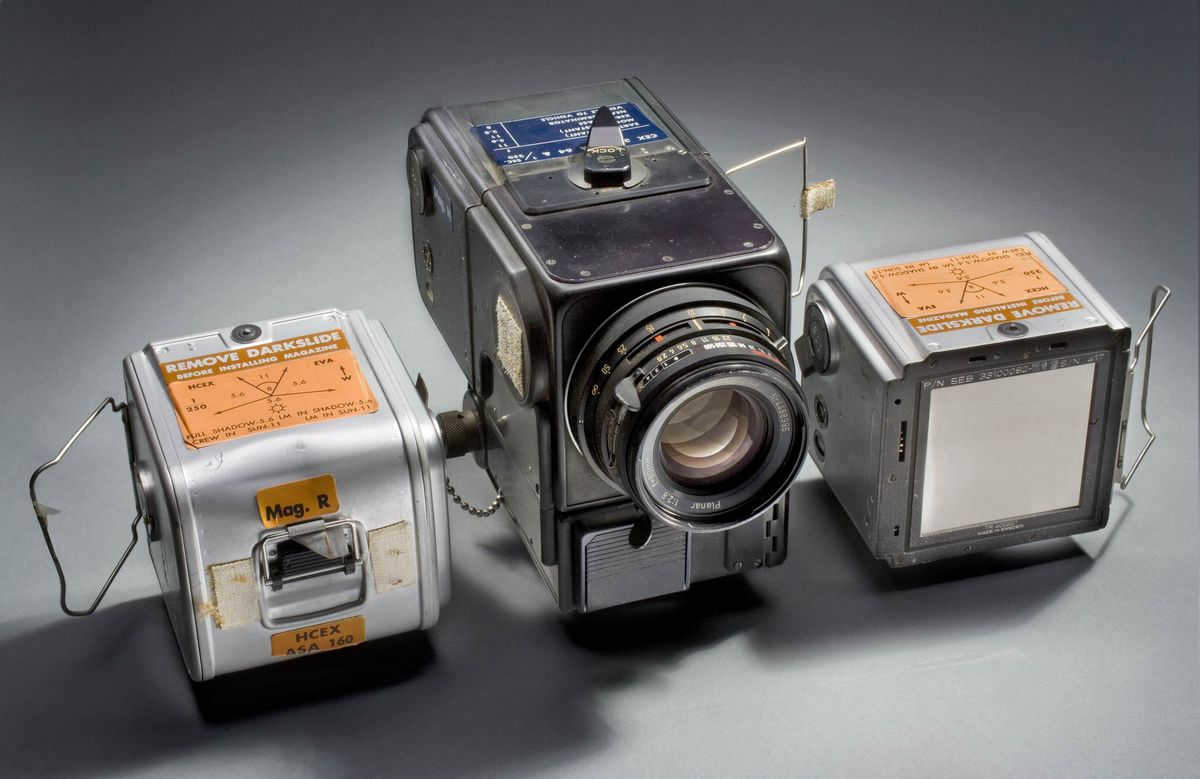
The Apollo moon shots will serve as the second reference point. A photograph of the camera settings used for the pictures taken on the moon’s surface is shown. Examine the film reel on the left, which has an ISO equivalent of 160 (similar to ASA). The shutter speed is set at 1/250sec. The instructions advise shooting at apertures ranging from f/5.6 to f/11. Considering the average aperture of f/8, we will use it as a point of reference. The difference between f/5.6 and f/11 is only two stops, so it is not significant.
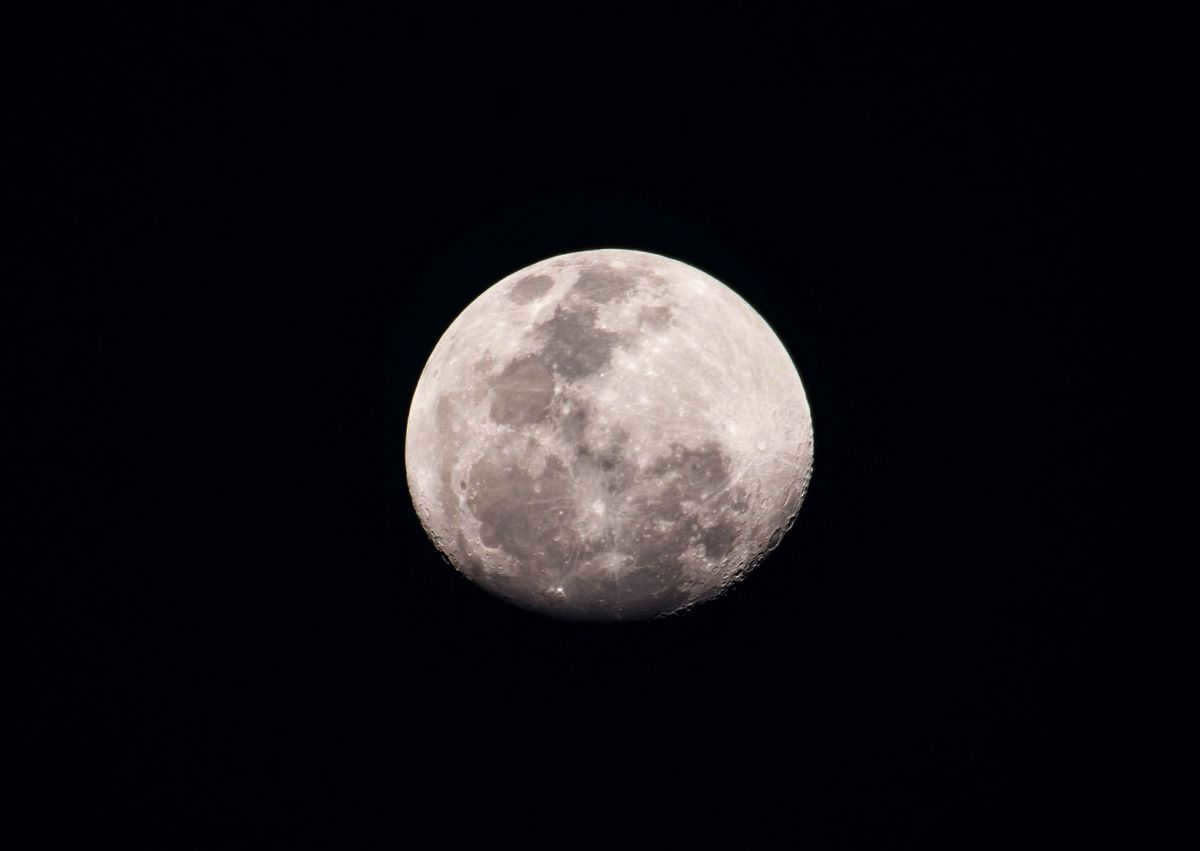
This photograph of the moon, captured by astronaut Paolo Nespoli, will serve as the final example. The original page provides the camera settings used: ISO 400, f/6.3, and 1/500.
| Sunny 16 | 1/100 | f/16 | 100 |
| "Apollo | 1/250 | f/8 | 160 |
| Paolo Nespoli | 1/500 | f/6.3 | 400 |
Combining everything
What is the number of steps between the daytime shots and the star photos? There are numerous online calculators available to count exposure, but I opted for this particular one. By entering the settings of the two photos, it calculates the exposure difference in steps. Below is a table showing the disparity between daylight and starlight photos. Keep in mind that the critical number is 15. Any value exceeding 15 clearly indicates an excessive dynamic range, and any attempt to capture both subjects will inevitably lead to either backlighting or shading.
| Milky Way and Malibu | 22 | 20.67 | 19.67 |
| Milky Way above the Atlantic | 20.33 | 19 | 18 |
| Stars over the yacht | 20.33 | 19 | 18 |
Here is the solution: the disparity in luminosity between images of objects during the day, such as the Moon’s surface, views of the Earth and other planets, and images of stars is too significant to be captured in a solitary photograph. The range of 20 exposure steps is beyond the capability of our cameras, thus images of objects in space during daylight do not exhibit stars. However, there are photographs that do display faint stars alongside illuminated objects, such as the Earth or the sunlit portion of the moon. As a consequence, the final result appears exceedingly dark. Below are a few instances:
